
We are the premier tour operator in American Samoa. To ensure you make the most of your time while here, book with the best!
In addition to our standard tours, we can tailor a tour to meet your specific needs. We also can arrange for excursions to Independent Samoa!

Manu'a is awaiting your visit. Manu'a is one of the most remote places in all of the United States and the birthplace of Polynesia.
Our team consists of tour guides who love our islands and want nothing more than for you to love our island too! And more often than not you will be accompanied by our owners Mike & Paula!


Testimonial
"On behalf of NPCA, Andrew and the rest of the PII staff, I wanted to send you a HUGE THANK YOU for all of your coordination efforts to assist our group with...well...pretty much everything!!! From food, to transportation to being our subject matter expert tour guide and everything in between, we thank you! You have done so much to assist and support us with the logistics in American Samoa. You allowed our participants to have an unforgettable and unique experience that not many others get."
-Taylor Auyoung
Pacific Island Institute
email: [email protected]
- Mikah Meyer
- Aug 25, 2018
- 15 min read
The Ultimate American Samoa How-To Visit the National Park Guide
Updated: Jul 12, 2023
My most-watched video on Facebook, with 341,000 views and counting.
Halfway between Hawai’i and New Zealand rests the only U.S. National Park Service site south of the equator.
A tropical forest, a beach where you’ll be the only person you see, and a culture than spans five inhabited islands are what make a visit to the National Park of American Samoa unique. My 9 days on the islands were made possible by the Visitor Bureau and my helpful guides Mike and Paula of TourAmericanSamoa.com , who provided information I’ve never found on the internet—until this blog post.
For all my favorite American Samoa photos, visit my Instagram

Because the logistics of accessing this park are one of the biggest struggles for most travelers, I’m going to describe the intricacies of visiting American Samoa while I take you through my 9 days on the islands. I include the expert guidance of the above locals, then outline your options-- and my suggestions --for how to visit.
If you want to talk through a personalized visit plan with a fellow palagi (foreigner—pronounced phonetically “PA-LAH-NG-EE”) to help determine your travels to the National Park of American Samoa, Contact Me here .
But first: The park layout:
- The official park land is spread over 3 islands, Tutuila, Ofu, and Ta’u. 2 other islands, ‘Aunu’u and Olosega, while not technical “park land” according to a map, serve to aid the park’s mission of sharing “Fa’asamoa”: the Samoan culture.
- Of the 3 islands, Ofu* is by far the experience most visitors see online. It’s the most iconic photo, it’s the best snorkeling, and it’s the most in line with what mainlanders imagine when they think of visiting a beach-paradise South Pacific.
However, most visitors never make it there.
Only a few hundred each year (find out why below). Tutuila is the “big island” and is the one where most visitors experience the park.
*Visiting Ofu is a challenge, but one you should consider as you read below and determine if/how you want to experience the National Park of American Samoa. Find out how to reach it below my itinerary, under VISITING OFU .

Day 1 - Monday
Local guides Paula and Mike from TourAmericanSamoa.com picked me up outside the PPG airport, but my checked bag hadn’t arrived (my first encounter with “Island Time”). For weight issues, Samoa Airways will hold a bag until later planes, so mine didn’t arrive till a flight 4 hours later (Samoa Airways was rebranded from Polynesian Airlines in 2017, but still operating as “Polynesian Airlines” when I visited in 2018).
We drove to the far western road of Tutuila island to see some of American Samoa’s 7 National Landmarks. Though not an official Landmark, a highlight was viewing Fatu ma Futi (photo above), the giant rock standing seemingly out in the middle of the sea, and stopping at a road side stand to eat/drink my first coconut (of which there’d be many).
I settled in at Sadie’s by the Sea, a hotel in Pago Pago with its own small beach and pool, air-conditioning (not common in most buildings) and WiFi (though not like mainlanders know internet. It would take 30 seconds to view an Instagram photo, so very slow. If you’re planning on relaxing by the pool watching Netflix, this is not your country/territory! US cell phones do not work here without a Samoan sim card).

Day 2 - Tuesday
A stop at the NPS Visitor Center where I learned all the park’s trails were closed due to Hurricane Gita which had struck the island a week earlier (February is during the rainy season, May/June/July is their dry season).
Because I am a Volunteer In Parks for the NPS, I was able to tag along to help inspect the trails and make sure Closed Trail signs were up. However, general visitors were told trails were officially closed.
There were no Rangers blocking the trails, and indeed, a group of 10 hiked the entire Mount Alava Trail (7 miles) on the previous day. Near Vatia, one of two villages in the park, the Pola Trail that I helped inspect was passable, but required a decent amount of climbing over many branches of large fallen trees and veering off path.
Fortunately, there are no poisonous plants, or venomous spiders and snakes in American Samoa, so hiking off trail felt less dangerous.

You might be lucky enough to be in town during a cultural performance, or perhaps you’ll stumble upon the original superintendent of the park (when it started in the 1980’s), as I did while visiting Pullman National Monument in Chicago. Because of this stroke of good fortune, 18 months later I told an NPS employee “Hello” from this former Superintendent and was treated to a dance performance by the NPS local maintenance crew.
After being taught one of their dances, I shared a similar one from my college days in Memphis (My "most popular video ever" at the top of this blog via YouTube embed, or click here for Facebook Watch video link ).
Day 3 - Wednesday
Since the main activity in the park on Tutuila (the big/main island with Pago Pago) is hiking, and official trails were closed, that would leave most visitors with either the option of exploring the other islands or the small beaches around town.
As an alternate, I was fortunate to don my Volunteer credentials again (earned mostly due to my visiting all 417 sites project —so don’t plan on walking in to “volunteer” if there’s a hurricane) and witness the NPS surveying the underwater coral damage from Hurricane Gita.
Our boat left from Fagasa, the village on the west side of the park and traced the entire coastline of Tutuila’s park unit, returning around the east side of the island to Pago Pago. Large swaths of downed trees and leafless sections of forest were evidence of the extreme winds and mudslides, and broken coral pieces showed the toll the violent storm took on underwater life.

Ending the day at Tisa’s Barefoot Bar, I took part in a popular tourist experience by eating from the traditional Samoan Umu that families still enjoy as part of relaxing Sundays at home. Watch restaurant owner, Tisa, explain the Umu below.

Shout out to the class of PA students on rotation at the Pago Pago hospital who let me hang out with them at dinner and took me for a “Picture with Charlie!”, the Starkist Tuna at the Starkist cannery.

Day 4 - Thursday
A drive to the easternmost portion of Tutuila allowed for a 15-20 minute boat ride to the National Landmark island of ‘Aunu’u. There I was greeted by longtime resident, Peter, who with his assistant, Mike, took me through husking, cracking, drinking, shaving, and creaming a coconut, followed by an example of creating a basket from a palm frond (those suckers are tough!).

We took that basket on a hike to view the giant crater in the middle of the island, and I heard the local legend of the two rocks/eternal lovers keeping guard of the crater’s overflowing waters. From there, we hacked our way through hurricane damaged trails to view the island’s famous tarot-root fields and then my personal favorite:
We went tilapia hunting!
Using the dull end of a machete, I watched the masters Mike and Peter, then joined-in myself to catch native island food in a traditional way: whacking the suckers to death.
Barring any moral qualms, this was one of the most fun things I did on ‘Aunu’u and the entirety of American Samoa. Watch the video to see Mikah the Tilapia Slayer , and ask Mike and Paula at TourAmericanSamoa.com to connect you with Peter if you’d like a day on ‘Aunu’u as well.
Day 5 - Friday
Up at 5:30am to catch an 8:00am flight to Ta’u, I arrived at the airport to find out the flight was already delayed 2 hours and Samoa Airways had “called everyone the night before,” though my tour operator got no call…
I landed in Ta’u and was greeted by Keith Ahsoon, a former University of Hawaii football player and local resident turned tour guide. The weather that day was so rainy that the beaches were not worthwhile, and the road into the Park land had been washed out by the hurricane. This meant that the park’s one hiking trail was inaccessible. The remaining day was spent observing local fishing customs, snorkeling at the pier, visiting a church Siva (dance), and talking with Keith about Fa’asamoa. I also stayed in his air-conditioned guest room, ala AirBnB, and meals were cooked by Keith in his home.

Day 6 – Saturday
Early morning boat ride from Ta’u to Ofu. I’ve never been seasick, but this $150, 1.5-hour boat ride is not for the faint of stomach. Was I prone to motion sickness, I would not have enjoyed this open-sea passage. However, that deep sea travel allowed me to witness a local fish catch which was amazing to these palagi eyes.
Ofu and the attached-by-bridge Olosega were the two most beautiful islands of the 5 I visited in Americans Samoa (all the inhabited ones). They make up the panoramic photo at the top of the park’s brochure, and Ofu’s beach is the one you’ll likely see plastered over any enticing advertisement. Riding the boat provided a stellar view of each.

Landing at Ofu, I was greeted by Ranger Brian, his wife, and their dog. The remoteness of Ofu and the extremely small number of people on the island provided one of the most intimate Ranger tours of my entire national parks journey. I was the only visitor to the island during my two days, which meant I was the only person on the entirety of this stunning, picturesque beach, with the exception of when Brian and Rebecca joined me to snorkel (once each day). The charming couple of Deb and Ben, who run the Vaoto Lodge , said they only have approx. 300 visitors per year.
So if you want a pristinely beautiful beach where you could (hypothetically) run around naked shouting obscenities and not be within ear/eyeshot to offend anyone:
OFU is THE place.

Seriously, whether snorkeling or strolling the beach, this is the type of place you can go if you want to escape to your own private beach for some solitude, or would make an incredible spot for a time away with a lover/proposal/anniversary.
I cannot express highly enough this being the “pearl” of the National Park of American Samoa, and an experience 20x better than you’d have on any other of the islands. If you’re going to spend $2,000 to get to Pago Pago, it’d be hard to not ante up for the $500 or so to experience Ofu.
That being said, Ofu is not the type of place to go if you’re looking for a “resort experience.” The meals are cooked by Deb and Ben, the duplex style rooms do not have air conditioning, and there’s no cultural shows or shopping to make you “feel” like you’re experiencing the culture. But the truth is, you’ll experience it in the interesting chats with Ranger Brian about living in such remoteness. You’ll appreciate it while sitting with Deb and Ben for their nightly viewing of the sunset (sitting on the airport runway which is literally in the front yard of the lodge, and steps from the beach). And you’ll for a moment not care about the humidity as you look up at a dusk-lit mountain and realize you truly are in a Robinson Crusoe paradise.
PS – Contact Me if you end up going and doing the proposal, lovers’ getaway, or skinny-dipping experiences above! I want to hear if this blog inspired you 😊

Day 7 – Sunday
Officially, all the trails on Ofu and Olosega are closed, as are all the beaches, because Sunday is meant to be a day of rest. However, because Ofu beach is federal, visitors are allowed to recreate there, and provides even greater security for your private beach experience.
I spent lunchtime with a local family, eating the food from their cooked Umu, and learning more about the lives of American Samoans, particularly how they contrast between those on the mainland and those on the islands (Hint: the outlying islanders think Pago Pago is too fast moving/too big of a city. While I could barely handle the slow pace of life and constant delays of Pago Pago).
Followed by some more snorkeling with Ranger Brian, I rode the Lodge bike to get a sunset view of the famous Ofu beach photo I’d seen everywhere.
Pro Tip: If you want “golden hour” photos of this mini-mountain, arrive 3-3.5 hours before actual sunset. The sun goes behind the larger, western mountain at that time, so your remaining photos will have you on the beach in the shade, and the mountain lit by sun, or shady as well. To determine this, it took me two days of failed golden hour attempts (the first day at 6pm for a 6:30pm official sunset, the second at 4:15pm for a 6:30pm official sunset).

Day 8 – Monday
I caught a very early, very choppy boat back to Ta’u (another $150—cash, you basically have to pay with cash everywhere, but it’s USD which is helpful to American travelers) to arrive in time for a 9:45am flight to Pago Pago…which was delayed 2 hours…
I returned to Pago and attempted to hike the Mount Alava trail, however, it had rained heavily that day, and my KEEN shoes were too slippery to tackle the trail which was very muddy due to the earlier rain. My feet were sliding everywhere and made hiking miserable.
If you want to hike the Mount Alava trail, do so on a dry day, and defy your beach/island-life urges and wear shoes with socks!
Day 9 – Tuesday/Wednesday (yes, really)
8:30am flight from Pago Pago to Samoa (FGI), ***which is a day ahead American Samoa, despite the 1-hour plane ride, followed by a taxi ride and 7 hours of airport waiting (my buffer time in case the Samoa Airways flight was cancelled/delayed) for my flight out of Samoa.
Sharing my week on local Pago Pago radio station 93 KHJ

VISITING OFU
DISCLAIMER: At the time of visiting American Samoa (February 2018), the flights were operated by Polynesian Airlines, even through Samoa Airways had purchased Polynesian Airlines in 2017. At the time of posting this blog, however, Samoa Airways does not advertise flights to Ofu or Ta’u. Manu’a Airways is allegedly beginning service in “Late 2018.” My best advice is to book your local Samoa flights/boats through local travel agency: TourAmericanSamoa.com - ask for Mike or Paula. This blog will be updated as I receive information from the American Samoa Visitor Bureau.
Arguably the best section of the National Park of American Samoa is Ofu Island. However, getting there is a complicated task. There’s only 1 flight per week, on Samoa Airways from PPG (Pago Pago), meaning you either spend 15 minutes on land between the round-trip flight (15 minutes is not worth your time, and the stamp on Ofu Island is also not worth the money. You can get a stamp at the Tutuila Visitor Center), or you have to stay 1 week, or you will need to take a boat to Ta’u Island (1.5 hour and $150 cash boat ride away) for one of their weekday morning flights.
*Flights to/from Ta'u only operate on Mondays, Tuesdays, Wednesdays, and Fridays.
Below are three itinerary options that allow you to reach Ofu.
A reminder that Samoa Airways sometimes cancels these flights and that both my flight to/from Ta’u were delayed 2 hours, meaning you are at risk of missing your connecting flight if you don’t have a buffer day or more. There is chatter of new flights being added, so check with Mike and Paula at TourAmericanSamoa.com before booking.
Option 1. One week - First to Ofu
Monday – Land in PPG via Hawaiian Airlines or Samoa Airways. Tuesday – Morning Flight to Ta’u. Overnight in Ta’u, or boat directly to Ofu (book $150 one-way boat with either Deb at the Vaoto Lodge—the main hotel on Ofu, or Mike/Paula at TourAmericanSamoa.com ). Wednesday – Boat to Ofu if having spent night on Ta’u, or 2nd day in Ofu if boating from Ta’u the day earlier. Thursday – Morning flight from Ofu to Pago Pago Friday – Tutuila or fly out on Hawaiian/Samoa Airways Saturday – Tutuila or fly out on Samoa Airways Sunday – Tutuila or fly out on Samoa Airways if they’re offering Sunday flights Monday – Fly out on Hawaiian
Option 2. One week - Last to Ofu (more time on Ofu, but slightly riskier)
Monday – Land in PPG via Hawaiian Airlines or Samoa Airways. Tuesday – Tutuila Wednesday – Tutuila Thursday – Morning flight to Ofu. Stay at Vaoto Lodge. Friday – Ofu Saturday – Ofu Sunday – Ofu – Sunday is a Day of Rest for all American Samoa islands, but will make your private beach even more private. Monday – Boat to Ta’u at 6:30am for 9:45am flight to PPG (but big risk if you fly out of Pago that night and the flight gets cancelled--see below for solution. Your boat to Ta'u--book through Deb at Voato Lodge or Mike and Paula at TourAmericanSamoa.com--isn't a commerical operator, but more like locals "out for a day fishing"). Fly out on Hawaiian that night or to FGI if there’s a late enough Samoa Airlines flight, OR stay till the next stay and fly to Samoa, OR stay until Friday on Tutuila for the Hawaiian Airlines flight.
Option 3. Trip longer than 1 week
Mix and match the above flights/boats for a custom schedule of your own. Contact Me for help creating it based on your individual desires.
PARK TRANSPORTATION & LOGISTICS
Getting to American Samoa (fly or boat):
Flying to American Samoa: Two options
1. Direct flight from Honolulu on Hawaiian Airlines.
Hawaiian Airlines has a monopoly on flights to Pago Pago (PPG) pronounced PAH-NG-O, PAH-NG-O. This means that round trip from Honolulu (HNL) will be about $1,000 USD, and from the U.S. mainland upwards of $2,000 USD. And they only fly on Mondays and Fridays, meaning your scheduling is limited.
2. Samoa Airways flight from Fagalii Airport in Western/Independent Samoa
Samoa Airways flies 15-seat Twin Otter airplanes for $50-$100 one-way from FGI (Samoa) to PPG. A warning that Samoa Airways is not your normal commercial airline. You don’t go through an X-ray security scan to enter the plane, you don’t have to put your liquids into 3 oz. bottles, and the planes aren’t pressurized, so bring earplugs or noise cancelling headphones (a slight benefit of the plane ride is that it is a brief respite from the heat/humidity of the islands).
None of the 4 flights I took on Samoa Airways left on time. 2 of the flights (from PPG to FTI, the Manu’a Islands) were delayed more than 2 hours. This is because Samoa Airways only operates with 4 planes, so if one is out for maintenance, they delay or cancel flights (fortunately, none of mine were cancelled).
The airline does do the job of getting you from Point A to B. If you are traveling on a time sensitive schedule, with children, or don’t enjoy waiting hours in non-airconditioned/indoor airports, then keep that in mind when deciding.
My itinerary to Pago Pago: (all prices USD unless noted, and all flight prices include one checked bag up to 23 kg/50 pounds)
I booked my February 2018 trip 5 months in advance. At that time, roundtrip flights to PPG from one of the cheapest U.S. mainland cities reaching American Samoa, Phoenix (PHX), on Hawaiian Airlines were $1,800. However, for the same price I was able to add some other destinations in the South Pacific along with stops to visit Hawaii’s 8 parks.
Essentially your choice is 1. Fly convenient, expensive, and only to American Samoa. 2. Fly less convenient, greater competition for price, and allow freedom to visit other places in the region.
I chose the latter.
1. PHX to Auckland, New Zealand (AUK) - $608 on Hawaiian Airlines (I was not impressed with Hawaiian Airlines).
2. AUK to Apia, Samoa (APW) - $220. At the time of booking, Virgin Airlines was advertising the same flight for $190, but they were awaiting governmental approval, so I booked with Air New Zealand (which was better than Hawaiian, but not as good as U.S.-based airlines like Delta, American, Southwest).
3. FGI to PPG - $50 on Samoa Airways (+ $40 for local lodging/transport). Because of flight schedules, I had to do an overnight in Samoa after my flight to Apia (APW). My hostel in Apia city was $30 and the Samoa Scenic shuttle from APW to my hostel was $10, but you must have 25 Western Samoa Tala (WST) cash to pay the driver, not USD, NZD, or AUD. There is a change booth outside APW airport. A taxi to the city would be 70 – 80 WST.
Also note, if you take this route, Apia is on the other side of the international date line. For example, I flew out of FGI (Samoa) at 12:30pm on Tuesday Feb. 20, and landed in PPG (American Samoa) at 12:05pm Monday Feb. 19.
4. PPG to FGI - $50 (+$35 for taxi). Samoa Scenic doesn’t do departing trips from FGI, so you have to hire a taxi, which should be 70 – 80 Tala.
The international dateline applies again, only the opposite as going TO American Samoa. I left PPG (American Samoa) on Feb. 27th at 8:30am and landed at FGI (Samoa) at 10am Feb. 28th (according to the schedule, but we were delayed 2 hours as seemed to be Samoa Airways standard).
My flight out of Samoa was a 30-45 minute taxi ride back to APW airport, and I had a 7-hour wait/buffer time before my flight out that evening.
5. APW to Sydney (SYD) - $350.
6. SYD to HNL - $325
7. HNL to PHX - $250
Total Price for flights, taxis, and hotels associated with crafting that itinerary: $1,928 USD.
So very close to flying direct PHX-PPG-PHX, but it included visits to New Zealand, Australia, (Western) Samoa, and American Samoa.
If wanting to build in a Hawaii visit en route, you could likely get fares for under $1,000 roundtrip from the U.S. Mainland to Honolulu, then take the $1,000 RT Hawaiian flight to American Samoa. This would work well if wanting to visit the 8 NPS sites spread over four Hawaiian islands, or visit Hawaii in general.
Boating to American Samoa: Two ways
Many visitors to the park do so on a day’s excursion from a cruise ship. While you will only be able to access the hikes and Visitor Center on Tutuila, you can technically visit the park land either on your own via taxi, or with a tour group like those Mike and Paula run through TourAmericanSamoa.com . Tutuila has very little when it comes to beaches you might imagine in the South Pacific, but if you're doing a long commerical cruise of the region, you'll likely get that other places.
The Samoa Shipping Corporation operates one weekly ship between Apia and Pago Pago on Thursdays. (Leaving Apia on Thursdays at 12am--aka Wednesday night--arriving in Pago Pago at 8am. And leaving Pago Pago that same day at 4pm to arrive at Apia at 12am Friday--aka Thursday night). Fares are $65 one-way for adults, $40 for children 2-12, and $20 for infants 1 and under.
Appreciate the insider tips on visiting American Samoa? This blog, and the experiences that provide its content, run entirely off your donations. To keep this information free and available to all, Donate to this website's operating expenses.
Contact Me if you want to talk through a personalized visit plan to the National Park of American Samoa with the assistance of a fellow palagi .

The author, Mikah Meyer , captures photos of Fatu ma Futi
#AmericanSamoa #Ofu #Tau #PagoPago #Tutuila #NationalParkofAmericanSamoa #UltimateGuide #HowTo #HowToVisit #SouthPacific #SamoaAirways #HawaiianAirlines
- National Parks
Recent Posts
Helping You Opt Outside in 2020
5 Ways For Wanderlusts to Survive Quarantine
Gear Guide for LGBT Pride
- Skip to main content
- Skip to header right navigation
- Skip to site footer

Albom Adventures
Capturing the essence of travel through photography
Inspiring travel through photography
Visiting American Samoa: Home to a Tropical US National Park
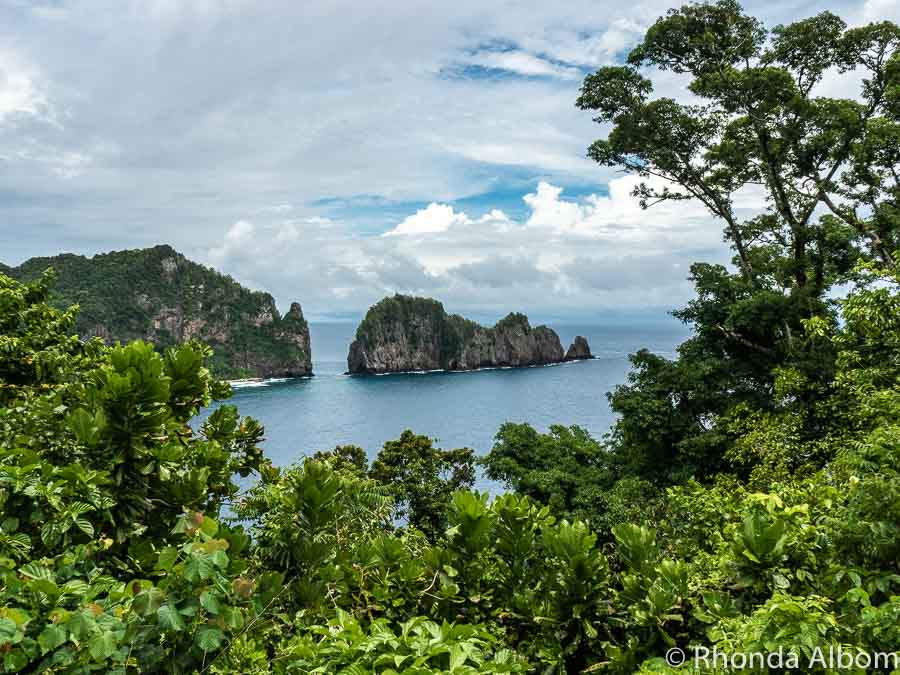
American Samoa is a tropical paradise waiting to be discovered. Situated in the southern Pacific Ocean just east of the dateline, it’s a small unincorporated US territory that many people don’t even know exists. For me, it is the lush green hills, warm turquoise waters, and a blend of traditional Samoan culture with modern American amenities that made visiting American Samoa irresistible.
The capital, Pago Pago, may be better known than the country itself. I think the familiarity comes from the Apollo flights (10, 12,13, 14, and 17) that splashed down close to American Samoa, with their astronauts being initially brought to the main island.
We arrived in Pago Pago on a Princess Cruise sailing from Los Angeles, California to Auckland, New Zealand and stops at ports in Hawaii and French Polynesia , as well as American Samoa. Pago Pago cruise port is an easy destination to walk off the ship without a plan, as there are plenty of things to do when visiting American Samoa.
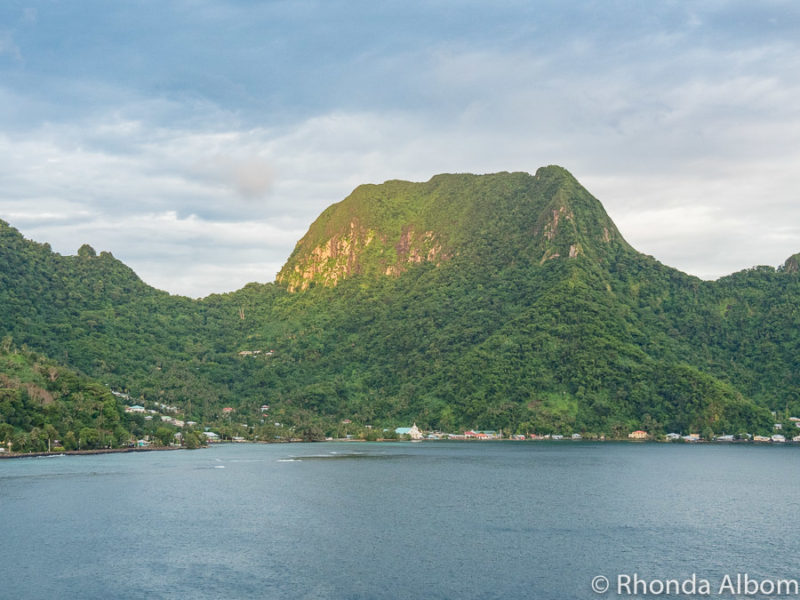
Things to do in American Samoa: National Park
US National Park chasers know of American Samoa, even if they haven’t made it here yet. The National Park of American Samoa is the most remote of the US National Parks and is the only one in the southern hemisphere. If that’s not enough uniqueness, it is also the only United States National Park not owned by the US government. Instead, it is leased (for a fee) from the eight villages that occupy the land. And the local villagers continue to use the area.
Vatia lookout
Aside from incredible views, there are three hiking trails from the Vatia lookout. Two go down to beaches, while the third leads to Maugaloa Ridge.
⇒ Download a free day hikes trail map from NPS here.
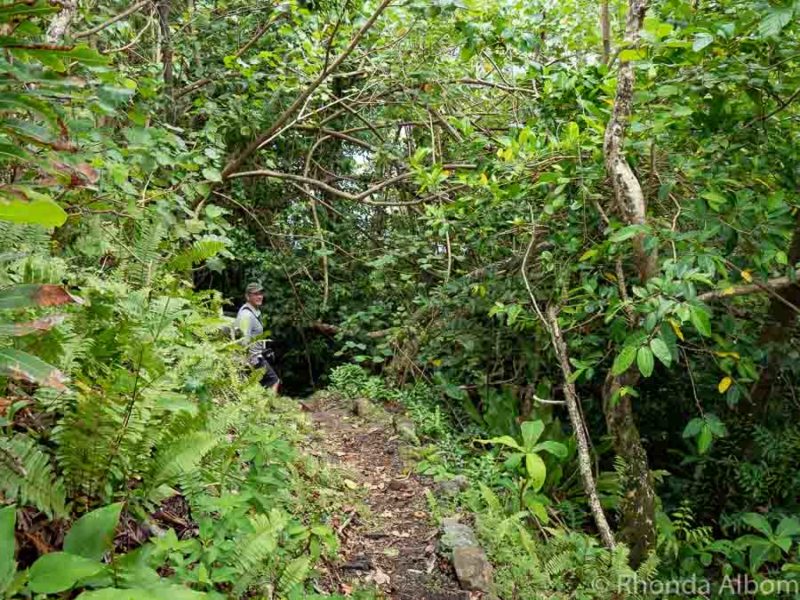
Pola Island
To demonstrate their bravery, young tribal men used to climb to the top of Pola Island. Today it is an active and protected seabird nesting area, home to noddies, frigate birds, and brown boobies.
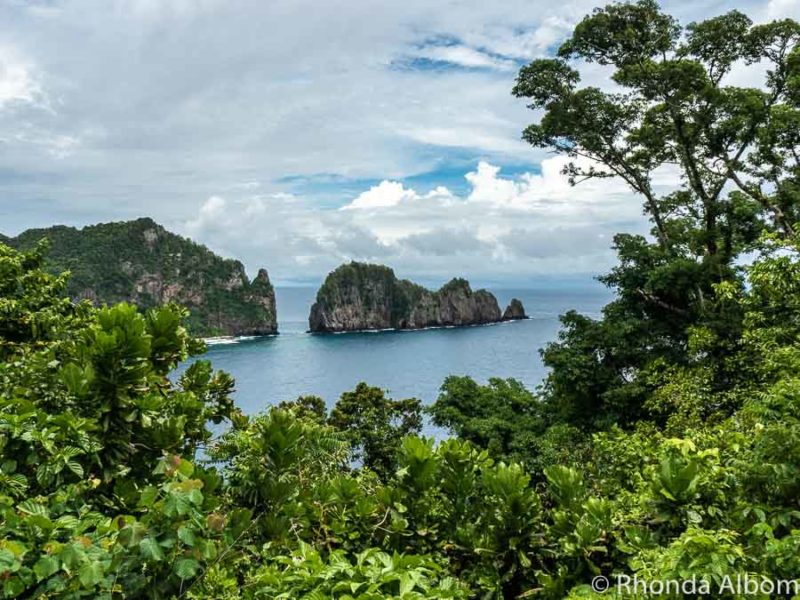
Vatia (the village)
A charming and typical beach town that can be driven or hiked to from the lookout. It’s an example of the mix of modern housing and amenities with traditional Samoan life. Located inside the National Park, the village gets regular payments from the US government for the use of its land.
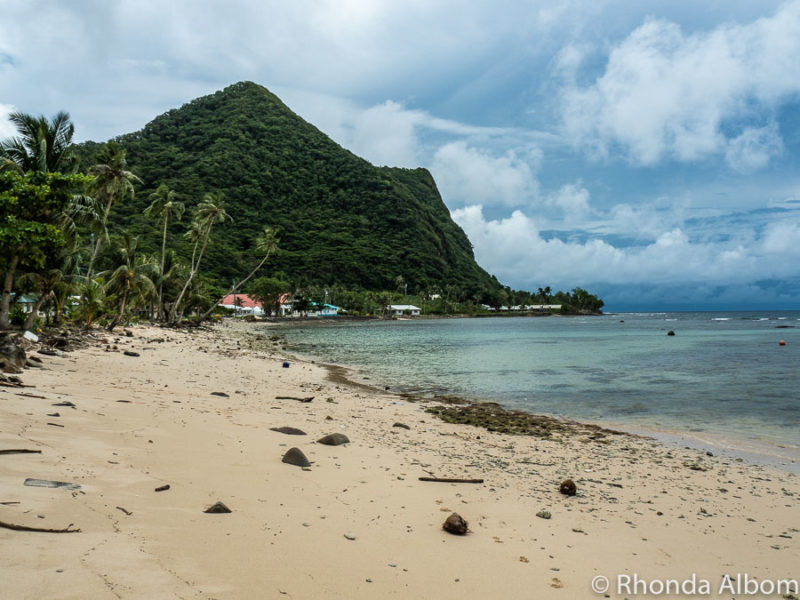
The village upholds traditional customs like Sa, a time at dusk dedicated to prayer and contemplation. Like other villages we passed through, an old welding tank is used as the town bell. It is rung three times nightly: first is the five-minute warning; second at the start of Sa; and, again to signify the end of Sa, about 15 to 20 minutes after it began. If you are visiting American Samoa, you will want to respect this tradition.
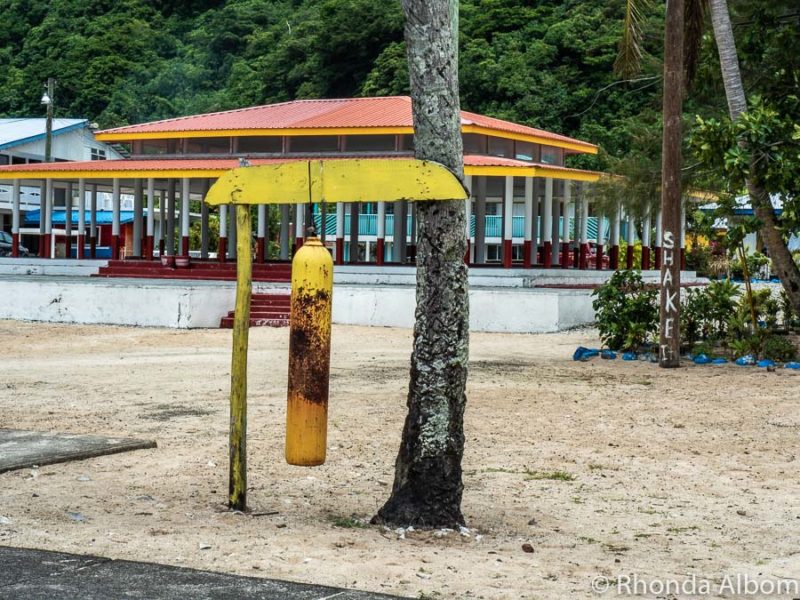
National park visitor center
Tours can be booked at the National Park Visitor Center, or just stop in to get your National Park Passport stamped.
Afono Pass and views of Rainmaker Mountain
Visiting American Samoa often means getting rained on, especially in Pago Pago Harbor. This is due to Mount Poia, which is nicknamed Rainmaker Mountain because the clouds get trapped at the top of the mountain, producing up to 200 inches of rain annually. As a result, Pago Pago Harbor has the highest annual rainfall of any harbor in the world.
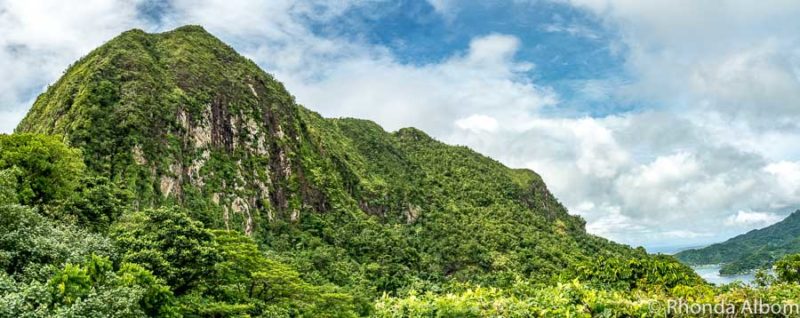
Things to do in Pago Pago: walking distance from the port
Pago Pago is the capital of American Samoa. It’s the largest city by both land mass and population, and it is home to the cruise port. If you arrive via cruise ship, you can take a ship’s excursion, join a tour at the dock, hire a private taxi, or walk to town on your own. We joined a three-hour fabulous tour with Tour American Samoa , which took us to all the sites on this page outside of walking distance.
Walking to the right will bring you to small towns, the museum, and the market. Turning left out of the port you will find the Ocean Center, beautiful white sand beaches, and more cafes.
Pago Pago’s deep, well-protected harbor is what first attracted the United States in 1839, and it took a while to formalise an agreement, finally creating the US territory of American Samoa on April 17, 1900.
Tauese P.F. Sunia Ocean Center
This is not an aquarium but rather a learning center. Home to the only NOAA ‘ Science on a Sphere ‘ in the southern hemisphere, The Tauese P.F. Sunia Ocean Center is a place to discover Samoa’s natural resources and to become more ocean aware. It’s free to visit and only a short walk from the Pago Pago port.
The Ocean Center is responsible for the protection of 13,581 square miles of ocean in six marine sanctuaries. It contains the only ‘Science on a Sphere’ in the southern hemisphere and the building features a mural by Wyland on its exterior wall.
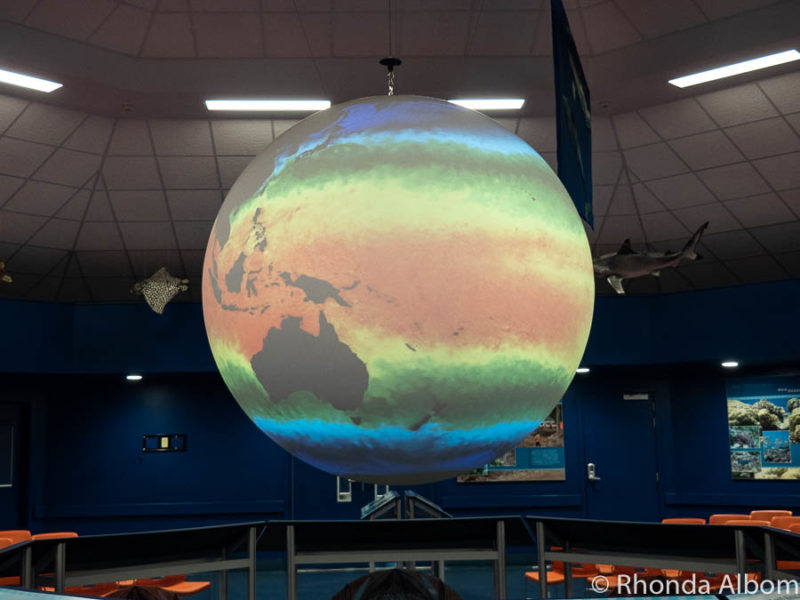
Jean P. Haydon Museum
Jean Haydon is the wife of the governor who welcomed the Apollo astronauts in 1970. Today the museum is not only the place to see Samoan artefacts and handcrafts; it is also an opportunity to see the moon rocks and the actual American Samoan flag that was carried to the moon on Apollo 11. The museum is going through a significant expansion and was closed when we visited.
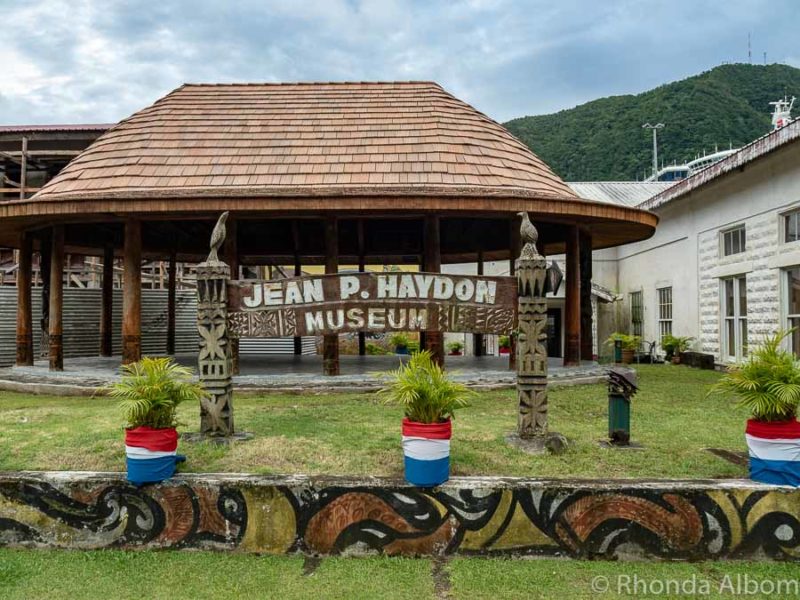
Other things to see when visiting American Samoa
As we took a cruise to American Samoa, we had only one day to see the highlights. We made sure we saw Pago Pago Harbor from up high, got into the only American National Park in the southern hemisphere, stuck our toes into the sea, and visited the Ocean Center.
Aerial Historic Tramway
Standing at the cliff edge looking 5,100 feet across the bay, I am not sure how I would have felt about taking the aerial tram if it were still operating. The historic tramway operated from 1965 to 1992. Rising from 191 feet to 1612 feet it took employees and tourists from the city side to the television transmitter across the harbor. It was severely damaged in 1980 when a p3 Orion clipped the tramway cable before crashing into the Rainmaker Hotel below. Unfortunately, none of the eight onboard the plane survived.
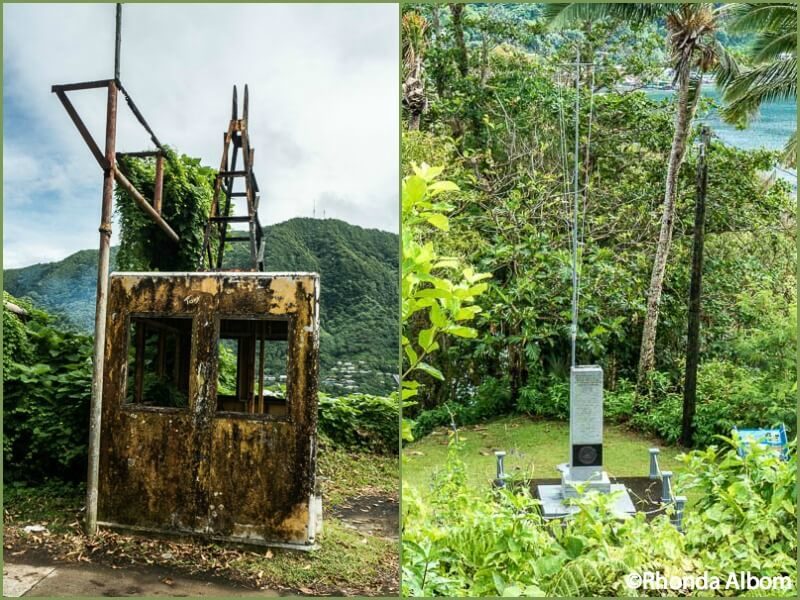
From the aerial tramway lookout, we can see both Breakers and Blunts Points, both which are home of the former military gun encampments, with cannons still in place.
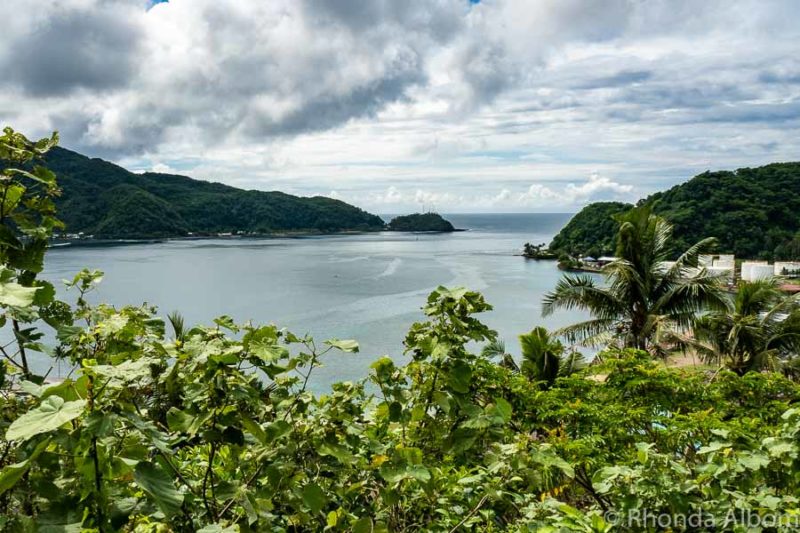
The legend of Fatumafuti – flower pot rock
It seems no South Pacific island tour would be complete without at least one exciting legend told. For us, it was the legend of Fatumafuti. Beautiful in its own right, it’s the legend that brings Fatumafuti to life. To my best recall:
A fisherman named Fatu was out at sea fighting off a shark when his wife Futi approached the shoreline. Worried about her husband she began to enter the water. He called out to her to stay away, but she didn’t listen. In an effort to save her he turned himself into a vast rock situated between the shark and his wife. She became so distraught she also turned herself to rock to always be near him.
Today the two rocks are named Fatu-ma-futi, the word ‘ma’ translating to ‘and.’ They overlook the entrance to Pago Pago Bay.
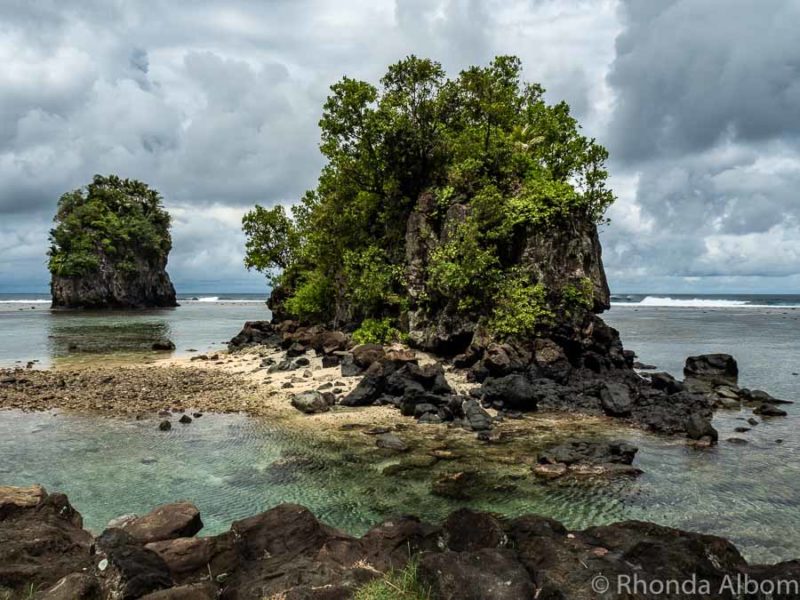
Starkist tuna cannery
Employing nearly 80% of the population in some capacity, Starkist Tuna dominates the harbor’s north shore. The industry utilizes fisherman, dock workers, factory workers, people to check and repair nets, drivers, and more. Honestly, you will smell it, just before you see it, but the stench didn’t stop us from getting out of the bus to take a photo with Charlie.
This is the fourth-largest tuna canning company in the world.
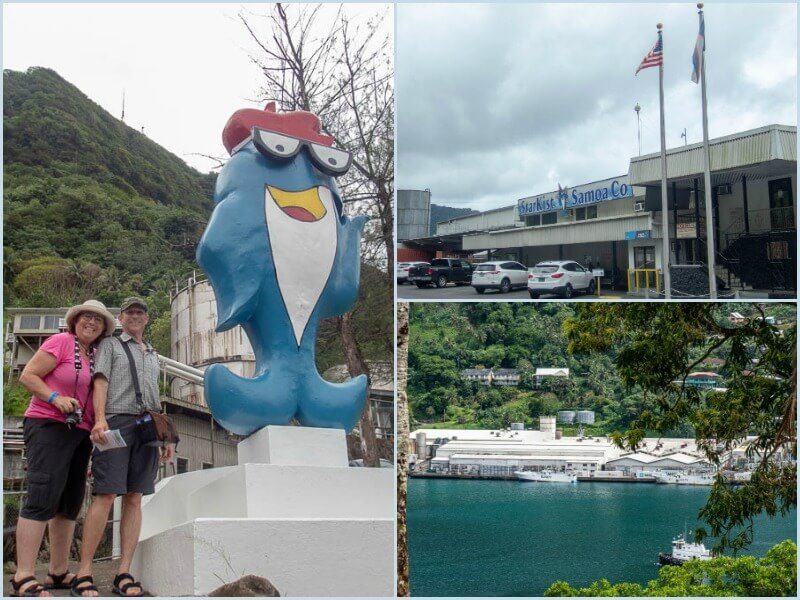
Flying Fox – a fruit bat roost
Remember always to look up, and you never know what you will find. Most of the bats we saw are common fruit bats, often called the flying fox. We were shown a bat roost during our tour and stumbled upon a second one near the Ocean Center. (We have also seen bats in Australia .)
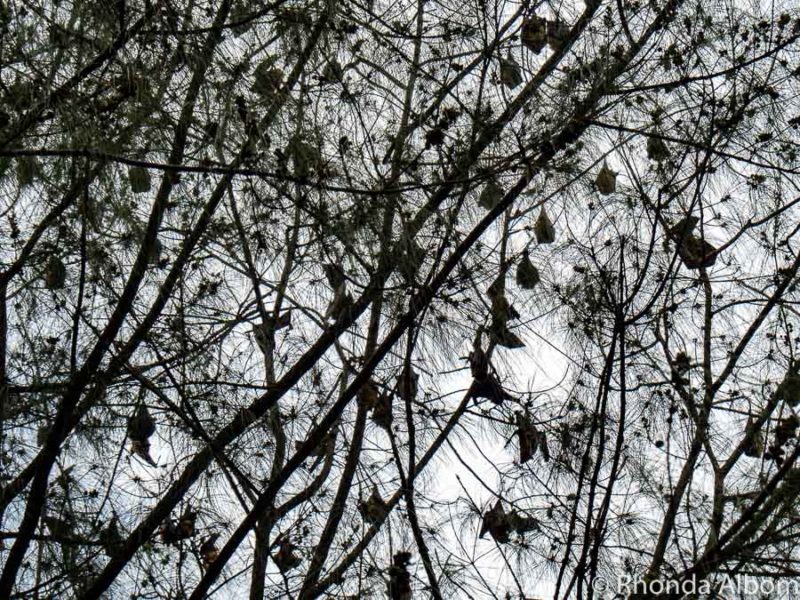
Everyday life in Pago Pago
We always like to step off the beaten path and, whenever possible, participate in local life. Meeting locals, walking down side roads, and stopping into local shops are some of our favourite things to do in a new destination. It’s more difficult in a cruise port as we have time restrictions, but we were told by many that there is quite of bit of similarity to daily life in Western Samoa
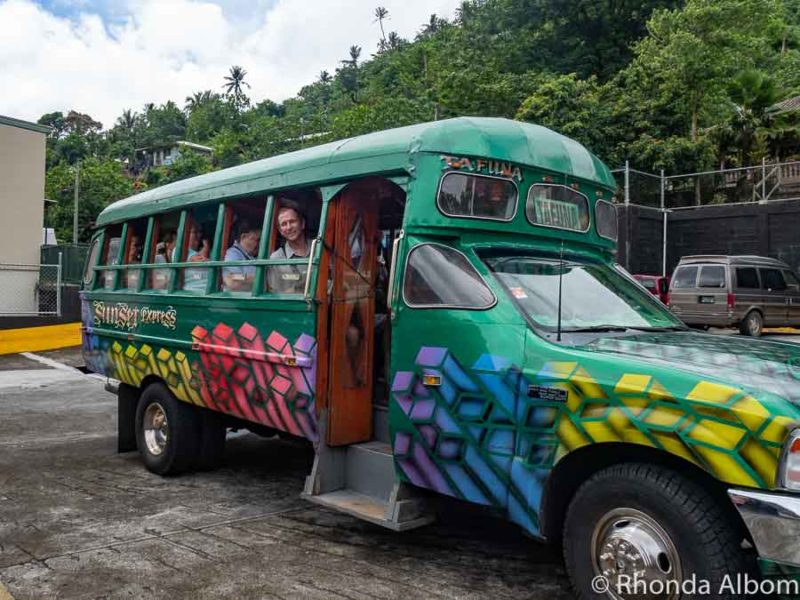
Where to Stay – American Samoa
If I could, I would have stayed longer. While there are not a lot of accommodation options on the island , there are enough.
Getting to American Samoa
Located about 2600 km south of Hawaii, American Samoa is the only American port in the southern hemisphere. Getting there isn’t as easy as one would think, with direct flights offered only from Honolulu (Hawaii) or Apia (Western Samoa ). Flying to Apia from either Sydney or Auckland is easy.
We arrived via Princess Cruises as one of only 17 cruise ships that will reach Pago Pago this year. This is up from 15 in prior years but still well below what the island’s tourism could handle. Private yachts frequently visit as evidenced by the many small and mid-sized boats in the harbor.
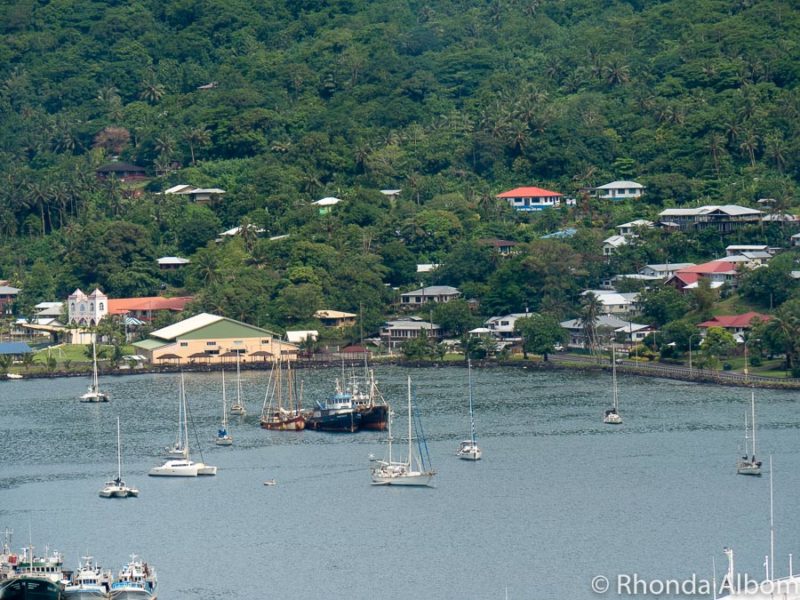
Practical Information and Fun Facts about American Samoa
- Samoa and American Samoa are two separate groups of islands. Samoa is often referred to as Independent Samoa or Western Samoa. (I used Western Samoa above to avoid confusion).
- Five main islands and two coral atolls make up American Samoa. Tutuila is the main island and is home to the capital (Pago Pago). Ofu Island is considered to be the most beautiful and, according to our guide, has the best beaches. The island of Ta’u is 100% solar-powered, and the goal of American Samoa is to be operating on 100% renewable energy by 2040.
- In Samoan, the letter g is pronounced ‘ng’ therefore, the capital city is pronounced ‘Pohng-oh Pohng-oh’.
- While Western Samoa has its own currency, American Samoa uses US Dollars.
- Tipping is not typically done in American Samoa.
- Pago Pago Harbor is .6 miles wide and 2.5 miles long.
- People born in American Samoa are United States nationals (not citizens).
- A somewhat traditional society, it is polite to cover up if you are away from a beach.
- American Samoa’s weather is tropical. Located just 14 degrees south of the equator, it is hot and humid. However, the best time to visit is June, July, and August when it is slightly cooler and dryer.
- There are two official languages on the islands English and the Samoan language.
- For free WiFi in Pago Pago, head to Fagatogo Market, the Public Library, or McDonald’s where you will find a few interesting options on the menu, like Portuguese sausage or Spam and rice.
Please Share on Social Media
If you enjoyed visiting American Samoa with us, please share this article on social media including adding one of these pins to Pinterest:
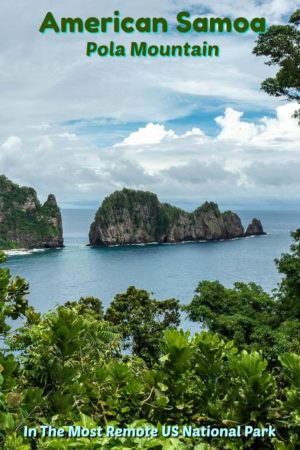
Tempted? Will you be visiting American Samoa?
Other islands you might like to see:
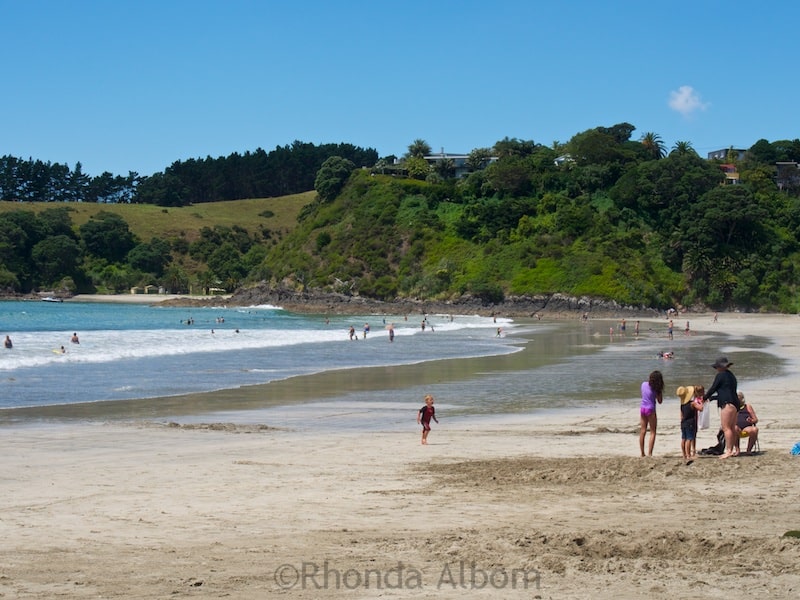
Waiheke Island Beaches: Which is Your Style of Paradise in New Zealand?
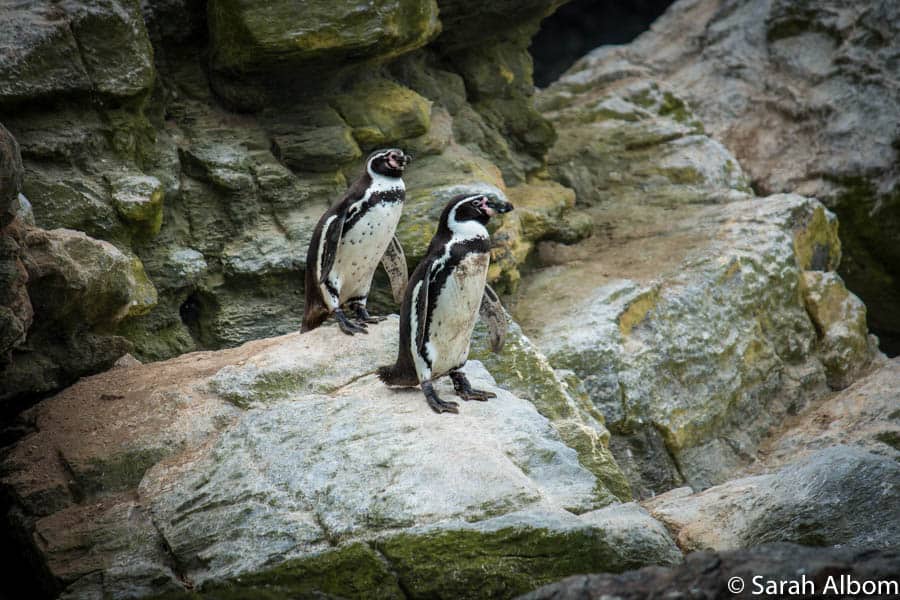
Getting to Isla Damas – Seeing Penguins in Chile
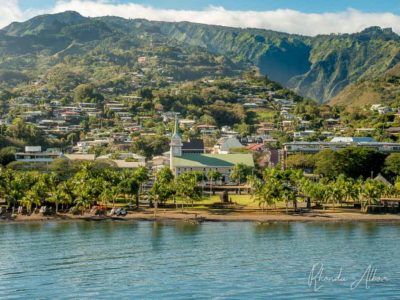
Things to do in Tahiti: Relax and Explore in French Polynesia
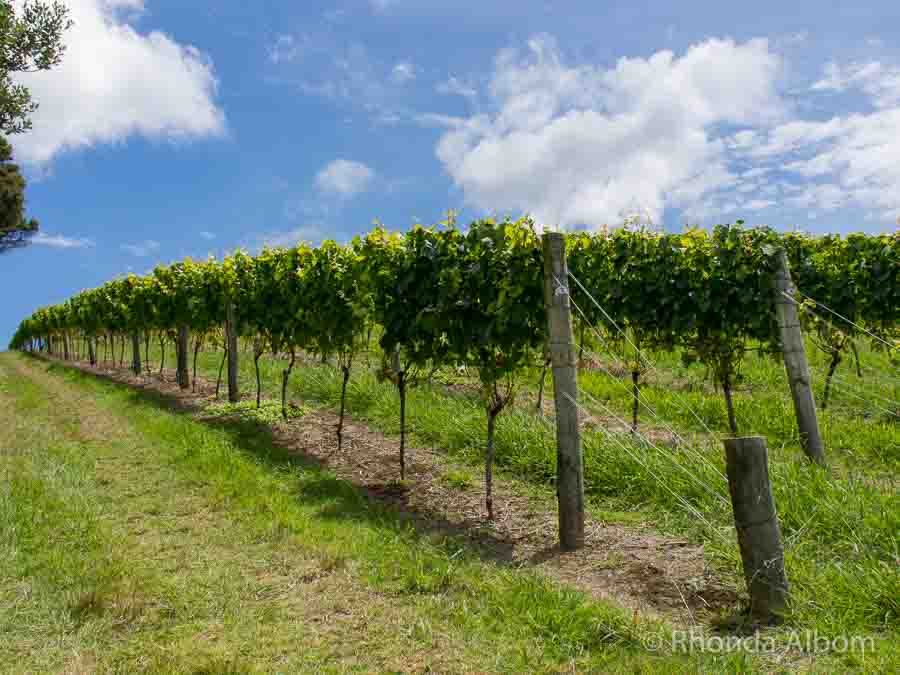
9 Best Waiheke Wineries for a Fun Day Out
Disclaimer: We worked with Visit American Samoa , the local tourism board. We were provided with complimentary entrances, a fabulous tour with Tour American Samoa , and sample items to assist in the writing of this review. The options expressed here are strictly our own.
About Rhonda Albom
Capturing the essence of travel through photography, Rhonda Albom is the primary author and photographer at Albom Adventures. She is an American expat based in New Zealand. She travels the world with her husband.
Reader Interactions
August 10, 2020 at 3:16 pm
This is one exotic national park! Such a cool place with so much to do. So beautiful!
Heather Thomas
June 9, 2019 at 2:59 pm
I lived there for 10 years and was married to a native from Leone. Both of my daughters were born there and I miss it so much!
Rhonda Albom
October 24, 2018 at 11:12 am
It does feel rather exotic when we were there. I had to keep reminding myself that it was actually part of the USA.
Paul Pietrangelo
October 22, 2018 at 2:38 am
What a beautiful island, very plush green with many trees. Is there definition for Pago Pago or jut the name? I would have liked to have seen a photo of your Princess cruise ship. See ya Rhonda.
Cruisin Paul
October 21, 2018 at 10:51 am
What an amazing journey, Rhonda! I am not a great fan of cruises, but you made me really curious about this one. I’d love to see the American Samoa too. Pola Island looks fantastic and so does the National Park of American Samoa. If we could end up in Aukland and spend a few days there too, it would be a great trip. It looks like you had a lot of fun on this trip.
Deborah Regen
October 21, 2018 at 8:03 am
Such lovely views as seen in your photos here. Well with all that rainfall it’s no surprise that everything is so lush and green. I’m glad to see there are more places now established to show the history and culture of the Samoan islanders. I bet the seafood and tropical fruits there are wonderful.
dorothyadele
October 21, 2018 at 5:01 am
I’m sure that tuna is plentiful in the South Pacific, but I would have never thought that you would find a Starkist plant in American Samoa. I didn’t expect the island to be as developed as you indicated by your post. For example, the McDonald’s surprised me too.
October 21, 2018 at 7:33 am
Thinking about it, it does make sense that Starkist would be where the tuna are, and as for McDonald’s, that is part of the American influence.
October 20, 2018 at 8:54 pm
So exotic and beautiful! I would love to visit American Samoa. It was interesting to also learn the differences between American Samoa and Western Samoa.
October 21, 2018 at 7:34 am
It’s an interesting mix of exotic and familiar.
Lyn aka The Travelling Lindfields
October 20, 2018 at 8:24 pm
Reading your post, I was thinking ‘this place sounds interesting’ we should look into going there. David and I love visiting islands so it sounded worth investigating. Then I got to the bit about how you get there – oh well. We can’t ocean cruise because I suffer from chronic seasickness. Maybe one day we will head to Hawaii again and fly from there.
October 21, 2018 at 7:32 am
Or go from Apia in Western Samoa. I am pretty sure you can fly non-stop from Sydney to Samoa, then fly over to American Samoa from there.
October 20, 2018 at 8:43 am
Wow. Living in the UK I’d heard of American Samoa but didn’t know much about it. I know more now and would love to visit! It’s probably never going to happen but at least I’m au fait with the capital, and its pronounciation, now.
October 21, 2018 at 7:31 am
You never know where life will take you. We discovered this island as a cruise port.
Jill Chapman
October 20, 2018 at 2:43 am
Hmmm. This cleared up many things for me – I’d heard of the National Park, and Pongo-Pongo but didn’t know that’s how it’s said but spelled Pago-Pago. I learned alot from your visit! Looks like a very cool place to visit.
October 20, 2018 at 7:33 am
I think you are opposite of many people who have seen the spelling of Pago Pago, but didn’t know how to pronounce it.
October 20, 2018 at 2:27 am
No I hadn’t heard of it, how interesting, particularly about the Apollo flights.
Amazing landscape & love the shots of the town.
October 20, 2018 at 7:32 am
I guess the flights had to splash down somewhere rather remote, so an American territory in the South Pacific is perfect.
Epepa Travel Blog
October 20, 2018 at 12:19 am
I really like the beaches and I would like to spend some time there to relax and look at the sea. I have the sea quite far away, so it’s always a big attraction for me.
October 20, 2018 at 7:31 am
I live by the sea, yet it is still a bit attraction for me too. I wish I had more time there to get in a good days snorkelling. As it was, I only had time to enjoy the white sand and stick my toes in the ocean.
October 19, 2018 at 10:44 pm
You’re right, I didn’t know it existed, but it looks like an idyllic paradise. The view from Afono Pass lookout looks absolutely incredible.
October 20, 2018 at 7:29 am
Don’t feel bad, you are in the majority.
California Globetrotter
October 19, 2018 at 7:46 pm
Wow! American Samoa is really beautiful! I actually didn’t know that the Apollo tests all splashed down near here. Not sure I’ll ever make it there, but I certainly wouldn’t mind a visit and learning more about their traditions, like ringing of the bell!
October 20, 2018 at 7:27 am
Not all of the Apollos, seems that 11 wasn’t on the list, even though they carried the American Samoa flag all the way to the moon.
October 19, 2018 at 9:56 am
I’ve often heard of American Samoa, but really don’t know much about it. Thank you for sharing your experiences in this fascinating, beautiful and remote place.
I was the same before we arrived. American Samoa turned out to be a wonderful surprise.
Alexander Popkov
October 19, 2018 at 8:32 am
These mountainous landscapes remind me a lot about Norway. Same green mountains and fantastic views.
October 20, 2018 at 7:35 am
Maybe the landscape, but the weather sure is different. It is hot, humid, and rains a lot in American Samoa.
beatravelling
October 19, 2018 at 5:40 am
Now I am trying to figure out if I’ve ever heard of American Samoa… I love everything Pacific 🙂 You’re so luck to be that close!
October 19, 2018 at 9:12 am
You may have heard of Pago Pago, the capital city. And, there are flights from Hawaii to Pago Pago.
October 19, 2018 at 4:33 am
Hi Rhonda – it does look completely amazing and what an opportunity to visit and learn more … love it. One day … very much perhaps! Beautiful shots and story line … cheers Hilary
October 19, 2018 at 9:06 am
I really enjoyed my time in American Samoa. There is a lot of history here mixed in with all the tropical beauty.
Amanda @ Cupcake N Dreams
October 19, 2018 at 3:00 am
I’ve never heard about the National Park in American Samoa. It looks like a beautiful place to explore.
The National Park draws many for its beauty and the challenge to get the park stamp.
October 18, 2018 at 9:37 pm
Oh, your photos really took my breath away! This is amazing. I’d never even thought of American Samoa, but it’s sure on my radar now.
October 19, 2018 at 7:45 am
Yes, American Samoa is beautiful and interesting. I was happy to get the chance to visit this relatively unknown territory.
Lydia C. Lee
October 18, 2018 at 8:40 pm
I’ll admit I don’t know much about it – I was looking at booking Samoa and kept getting them mixed up …worked it out in the end! 😉
October 18, 2018 at 9:16 pm
I have now visited both Western Samoa and American Samoa. They both are tropical paradises yet each a bit different. Interesting tidbit: many of the workers at the tuna canning plant are from Western Samoa because of a large difference in the minimum wage and the favourable foreign exchange rate.
Kellee @ LifeAdventurers
October 18, 2018 at 9:29 am
What a treat? To be 1 of 17 cruise ships to stop here is amazing insight. Firstly, might I just say, that cruise sounds pretty epic in the first place… I mean to travel from LA to Auckland by ship is quite a distance! I hope it wasn’t too choppy and was enjoyable. Now for American Samoa, for me, the Aerial Historic Tramway sounds like something I’d like. Odd I know, but I quite like visiting abandoned things but the real treat would be the flying foxes.
Our cruise was very smooth, we were lucky with great weather nearly all the way. The cruise was a repositioning of a ship from Alaska to New Zealand / Australia so it happens once per year in this direction. Like you, I am fascinated by derelict structures. (Did you see the Derelict Sheraton we visited on Rarotonga?)
Su-sieee! Mac
October 18, 2018 at 8:39 am
So that’s what Pago Pago looks like. Ever since I read a story about Pago Pago in 7th grade English 500 years ago, I have thought how cool it would be to visit there.
October 18, 2018 at 9:19 pm
It was not on my bucket list but visiting American Samoa was an unexpected surprise.
October 18, 2018 at 7:16 am
Oh how beautiful. This looks like a great place to visit. I bet you had a blast!
October 18, 2018 at 7:20 am
I had a lot of fun and could see spending more time there to explore more of the island.
October 18, 2018 at 5:37 am
This looks like an amazing part of the Earth. I haven’t been there, but love lush green places and nature. I would definitely go for the hikes there.
October 18, 2018 at 7:15 am
I wish I had more time to do some of the hikes. The tropical flora is beautiful.
Angela Cruz
October 18, 2018 at 2:32 am
I enjoyed this thorough blog post! It was so fun to read. I am ashamed to confess I had never heard of American Samoa, so this was amazing to read and learn about it. It makes me want to go!
October 18, 2018 at 7:17 am
Pago Pago is probably the most famous part of American Samoa. Once you travel away from the city, you are immersed in tropical greenery.
October 17, 2018 at 5:37 pm
I’ve heard of Samoa until I read your post! I enjoyed reading about your experience! I am adding this place to my bucket list now!
October 18, 2018 at 7:18 am
I only wish I had more time to explore in this port.
October 17, 2018 at 4:16 pm
It’s fun to learn so much about American Samoa along with your beautiful photos. I had no idea there was a U.S. National Park in the area and that it’s rented from locals. Sounds like an interesting situation and I wonder how it plays out from time to time.
Thank you once again for inspiring me with your beautiful photos! The flower pot rocks are my favorite.
October 17, 2018 at 4:26 pm
Thanks Brooke. I also had fun learning more about it while we were there.
October 17, 2018 at 4:15 pm
Your photos are stunning! We’ve always wanted to visit, but the travel time from Wisconsin is so long! Maybe one day!!
October 17, 2018 at 4:25 pm
LOL – we visited as we sailed from the USA to New Zealand. It was a cruise port with Princess Cruises .
Ryan Biddulph
October 17, 2018 at 2:10 pm
This place has that South Pacific feel Rhonda. From the fruit bats to stunning water, to lush forest to those small scale centers of towns, it looks similar to my time spent in Savusavu. Way cool experience.
October 17, 2018 at 4:24 pm
In someways it reminded me of Western Samoa, and in other ways it was very different. A bit of South Pacific mixed with American culture.
Alex J. Cavanaugh
October 17, 2018 at 11:59 am
Flower Pot Rocks are rather cool. So much greenery and vegetation. And is it wrong I am still chuckling at boobies?
October 17, 2018 at 4:22 pm
LOL – I think a lot of people are still chuckling about the boobies, but they just won’t admit it.
Comedy Plus
October 17, 2018 at 11:34 am
Lots of beauty here. Great shots. I’d be near the water. Or perhaps on a boat. My favorite thing to do.
Have a fabulous day. ♥
October 17, 2018 at 4:21 pm
It’s a fabulous island for boaties as the main harbour is long and protected.
Leave a Reply Cancel reply
Your email address will not be published. Required fields are marked *
Save my name, email, and website in this browser for the next time I comment.
This site uses Akismet to reduce spam. Learn how your comment data is processed .
Privacy Overview
THE BEST American Samoa Tours & Excursions
American samoa tours.
- Sightseeing Tours
- Scuba & Snorkeling
- Fishing Charters & Tours
- 5.0 of 5 bubbles
- Good for Kids
- Budget-friendly
- Good for Couples
- Good for Big Groups
- Adventurous
- Good for a Rainy Day
- Hidden Gems
- Honeymoon spot
- Good for Adrenaline Seekers
- Things to do ranked using Tripadvisor data including reviews, ratings, photos, and popularity.

1. Tour American Samoa
2. Pago Pago Marine Charters
PRESENTED BY TRAVELODGE BY WYNDHAM

Ofu Island's coral reef lies within the 13,500 acres of National Park of American Samoa, the first U.S. national park in the Southern Hemisphere.
Visit This Unique, Tropical National Park
The oft-overlooked American territory of Samoa is home to a national park spanning rain forest, beach, and coral reef.
Location: American Samoa Established: October 31, 1988 Size: 13,500 acres (9,500 land, 4,000 marine)
For some 3,000 years, the people of Polynesia's oldest culture have been keenly attuned to their island environment, holding it to be precious and managing it communally. The name they gave their land reflects their attitude: Samoa means "sacred earth."
Located roughly 2,600 miles southwest of Hawaii, American Samoa, a United States territory, comprises ten volcanic islands (five inhabited) and two coral atolls (one inhabited). In 1988 Congress authorized the land for a national park. In 1993, Samoan chiefs agreed to sign a 50-year lease that enables the National Park Service to manage an area of rain forest, beach, and coral reef on three islands. Samoans help manage the park, and their villages offer a few guest facilities (ask the park about its unique homestay program).
The park protects hundreds of plant species in five distinct rain forest communities: lowland, montane, coast, ridge, and cloud. It is the only such rain forest on American soil. Among the fauna visitors can see are tropical birds and the endangered flying fox—a fruit bat with the wingspan of a barn owl.
On Tutuila, American Samoa's largest island, lofty volcanic ridges overlook the deep blue waters of Pago Pago Harbor. Except for a few villages, and the scenic drive that skirts the harbor and the dramatic southern coastline, there is little level land. Atop this crumbled terrain and plunging steeply toward the sea on the island's northern side lies the park area—about 2,500 acres of land and some 1,200 acres of ocean.
Parkland on Ta'u, the easternmost island, encompasses about 5,400 acres—including Lata Mountain, American Samoa's highest peak—and 1,000 acres offshore. Unforgettable is the panoramic view from the cloud forest toward the rugged cliffs of the southern coast. Small, remote Ofu Island includes what many call American Samoa's loveliest beach. Its main attraction is the 350-acre coral reef.
How to Get There
There are flights to Pago Pago from Honolulu twice a week that take 5.5 hours. Time from California is about 14 hours, including a 3- or 4-hour Honolulu layover. From the airport, taxi or rent a car to the Sadie Thompson Inn, Sadies by the Sea Hotel, Pago Airport Inn, Tessarea Vaitogi Inn, Tradewinds, or Motu-o-Fiafiaga Motel. From any of those accommodations you can reach the park visitor center in Pago Pago by bus or car. Accommodations are also available on Ta'u, Ofu, and Olosega. To get to Ta'u requires about a half-hour flight from Pago Pago while Ofu visitors are transported to Ofu Island by local fisherman. Ofu's park begins at the edge of the airport; parkland on Ta'u is about a half-hour walk from the airport.
Any time. The islands are 14 degrees south of the Equator, giving them a hot and rainy climate year-round. The heat and rain abate slightly from June through September.
- Nat Geo Expeditions
How to Visit
Contact the park headquarters before you visit. For information, write National Park of American Samoa, Pago Pago, American Samoa 96799, talk by phone at +1 684 633 7082 ext. 22, or visit the website . You can also drop in at the visitor center, located in Pago Pago across from the Pago Way Service Station.
The National Park of American Samoa is the only National Park Service site south of the Equator.
Related: See the wonder of Earth's oceans

FREE BONUS ISSUE
Related topics.
- NATIONAL PARKS
- RAIN FORESTS
You May Also Like

Banff, Jasper and more: 4 wild places for Canadian outdoor adventures

How to visit Channel Islands National Park

How to visit Lake Clark National Park and Preserve

How to visit Biscayne National Park

How to visit Grand Teton National Park
- Perpetual Planet
- Environment
- Paid Content
History & Culture
- History & Culture
- Photography
- Mind, Body, Wonder
- Gory Details
- 2023 in Review
- Best of the World
- Terms of Use
- Privacy Policy
- Your US State Privacy Rights
- Children's Online Privacy Policy
- Interest-Based Ads
- About Nielsen Measurement
- Do Not Sell or Share My Personal Information
- Nat Geo Home
- Attend a Live Event
- Book a Trip
- Inspire Your Kids
- Shop Nat Geo
- Visit the D.C. Museum
- Learn About Our Impact
- Support Our Mission
- Advertise With Us
- Customer Service
- Renew Subscription
- Manage Your Subscription
- Work at Nat Geo
- Sign Up for Our Newsletters
- Contribute to Protect the Planet
Copyright © 1996-2015 National Geographic Society Copyright © 2015-2024 National Geographic Partners, LLC. All rights reserved
- Skip to navigation
- Skip to main content
- Skip to footer
- All Resources
- Press Releases
- Policy Updates
- Climate Change
- History & Culture
- Park Funding
- Visitor Experience
- Find a park
- Mid-Atlantic
- Northern Rockies
- A Century of Impact
- Our History
- NPCA: The Book
A Century of Impact is a 192-page hardbound treasure celebrating NPCA’s first 100 years of protecting America’s national parks. LOOK INSIDE -->
- Take Action
- Attend an Event
- Share Your Story
- Partner with NPCA
- Give A Gift Membership
- Memorial & Tribute Giving
- Monthly Giving
- Create a Fundraiser
- More Ways to Give
- Trustees for the Parks
- Donor-Advised Funds
- Gifts That Pay You Back
- Estate Planning
Fa‘a Samoa: The National Park of American Samoa (WAITLIST ONLY)
Welcome to the National Park of American Samoa, the only U.S. national park south of the equator. On this tour, you have the rare opportunity to visit all of the islands that comprise this national park — Tutuila, Aunu‘u and the Manu‘a Islands. You will be spending time with the community and learning about the customs of the islands, while also visiting paleotropic rainforests and seeing flora and fauna found in no other national park. During this unforgettable NPCA small group tour, you’ll feel the warm welcome of Samoan culture as a guest in an immersive experience of community, culture and conservation.
A diver at Rose Atoll Marine National Monument and National Wildlife Refuge, the easternmost island of American Samoa.
Download Detailed Trip Brochure (1 MB pdf) ›
Available Dates:
October 10-17, 2024 - SOLD OUT FOR 2024 (WAITLIST ONLY)
8 days/7 nights
Minimum/Maximum: 8 guests/10 guests
Why Travel with NPCA?
Our goal is to offer premium educational travel itineraries in the places we know best: America’s national parks.
Itinerary Highlights
- Embark with a local guide on an exclusive “insider’s tour” of Aunu‘u Island, engaging with residents of the local villages and partaking in a traditional ava welcome ceremony
- Travel through one of the most remote national parks in the U.S. , getting a behind-the-scenes look from NPCA experts at what challenges face the area
- Paddle an outrigger canoe in the crystal-clear, tropical waters of Pago Pago Harbor with a local canoe club
- Spend two full days on Ofu Island hiking its mountains, exploring its wildlife and plants, snorkeling among the more than 950 species of fish and 250 types of coral
- Journey with expert guides through coastal areas and paths, secluded beaches, a littoral forest and archaeological sites on the island of Ta‘ū
- Immerse yourself in the oldest culture of Polynesia, the Samoan culture, with a local family who will prepare a traditional-style umu lunch for you
- Receive expert knowledge as you tour the state-of-the-art Tauese P.F. Sunia Ocean Center to learn about the National Marine Sanctuary of American Samoa
Day 1: October 10 - Arrival Day Pago Pago, Tutuila : Arrive in the late evening in Pago Pago on the main island of Tutuila . Your NPCA host and trip leader will meet you once you clear immigration and customs. When the group has gathered, we’ll travel in private shuttles to our beachfront hotel, Sadie’s by the Sea, and check-in. Our NPCA host will provide an overview of NPCA’s role and priorities in the region and the exciting sites we can expect to see throughout our carefully crafted NPCA small group adventure. Sadie’s by the Sea (D)
Day 2: October 11 - Pago Pago, Tutuila : We’ll start our first full day in American Samoa with a group breakfast, introductions, and an orientation to the islands and to fa‘asamoa. The group will then head out together for the National Park of American Samoa (NPAS) Visitor Center , where we will get an overview of the park, which spans land and offshore areas on and around the islands of Tutuila, Ofu and Ta‘ū. A national park ranger will join the group as we head out to the Pago Pago section of the national park, which is located on the north side of Tutuila island between Fagasā Bay and Afono Bay and extends from Mt. Alava and the Maunaloa Ridge to the offshore reefs. A picnic lunch will be provided to enjoy during our outing. On the way to the park, we will pass the villages whose chiefs signed the 50-year leases. We may also catch the first glimpse of the large fruit bats, some of which have the wingspan of an owl. Following the visit to the national park, the group will enjoy a tour of the state-of-the-art Tauese P.F. Sunia Ocean Center to learn about the National Marine Sanctuary of American Samoa , the largest and most remote of the U.S national marine sanctuaries. Formed by extinct volcanoes, its habitats are host to a bewildering variety of tropical fish, invertebrates and algae. This extraordinary marine national monument has faced unprecedented threats — threats which NPCA is actively addressing in order to preserve the sanctuary’s natural and cultural resources. As we will experience firsthand, its unparalleled beauty is a legacy NPCA remains vigilant in protecting. The group will walk back to the hotel from the Ocean Center to prepare for a group dinner at a local restaurant. Sadie’s by the Sea (B, L, D)
American Samoa
Day 3: October 12 - Aunu‘u Island : After enjoying breakfast, we’ll depart for our day excursion to Aunu‘u National Natural Landmark . Aunu‘u is a small volcanic island 1.2 miles southeast of Tutuila with a land area of 0.58 square miles and is home to Aunu‘u Village. We will head out to Aunu‘u in water taxis (small boats) with a local guide from Aunu‘u who will take us on a special “insider’s tour” to meet the residents of the village. Residents will share typical aspects of daily village life and Samoan practices and customs, including a traditional ava welcome ceremony . They will also share beautiful sites where we can spend some time swimming or snorkeling. Although the beauty of these sites is unmistakable, residents of the village may also share their concerns about rising sea levels — a reality that NPCA is addressing in collaboration with local community partners. After swimming or snorkeling, an umu lunch will be served, prepared specially for the group by a local family. The umu is an above-ground earthen oven in which food is cooked on heated stones. Samoans typically prepare food in the umu on special occasions and for special guests. After lunch, we will depart on our water taxi and return to Tutuila . At the hotel, we can enjoy a bit of free time before gathering for dinner at the hotel restaurant. Sadie’s by the Sea (B, L, D)
Day 4: October 13 - Pago Pago, Tutuila : Sunday is a day of worship in Samoa. Our morning schedule is free, and you may choose to attend one of the many church services in town. Christian missionaries were very successful throughout Polynesia, and church is an important part of Samoan culture today. Attending church is an interesting cultural experience and an excellent opportunity to hear wonderful Samoan singing. Services are available in Samoan and English and last approximately an hour. We’ll enjoy lunch in the hotel restaurant, then join our trip leader to head out for a canoe excursion. We’ll paddle an outrigger canoe in Pago Pago Harbor near the hotel with a local canoe club and enjoy panoramic views of Rainmaker Mountain and the historic World War II landmarks of Breakers and Blunts Points . The group will have dinner together at the hotel, and our trip leader will go over instructions for the three-day visit to the Manu‘a districts of the national park, including the extremely remote islands of Ta‘ū and Ofu with limited services. Due to the weight restrictions on the small aircraft for the flight, you will need to pack everything you will need in a carry-on luggage. The remainder of your luggage will be kept at the hotel in Pago Pago. Sadie’s by the Sea (B, L, D)
Tutuila Island, American Samoa
Day 5: October 14 - Ta‘ū – Ofu, Manu‘a Islands : We will be departing the hotel early this morning to catch the flight to our first stop — Ta‘ū , the largest of the Manu‘a Islands . We will provide a boxed breakfast for you. Historically the island of Ta‘ū enjoys high status, not only because of its size and beauty, but also because of its connection to Tu‘i Manu‘a, the oldest chiefly title in the Samoan Islands and in all of Polynesia. The Ta‘ū portion of the national park covers the southeastern half of the island and approximately 5,400 acres (of which 1,000 acres are offshore), making it the largest contiguous area in the entire park. We will be visiting coastal areas and paths which are often overgrown. We’ll have access to secluded beaches, a littoral forest and archaeological sites. During our journey through Ta‘ū, we’ll delve deeper into NPCA’s efforts to ensure national parks thrive for the next 100 years, a goal that prioritizes the protection of cultural sites and artifacts. Residents will prepare a delicious lunch for us before we depart on a 2-hour boat ride to Ofu. Upon our arrival on Ofu, the group will transfer to the Vaoto Lodge, located in the national park, and check-in. We can spend time in the area and roam the sandy beach in front of the lodge before dinner. Vaoto Lodge (B, L, D)
Day 6 and 7: October 15 - 16 - Ofu, Manu‘a Islands : We will be spending two days on Ofu Island . We’ll hike its mountains, explore its wildlife and plants, swim and snorkel in a turquoise sea, get to know the beautiful coral reefs and enjoy American Samoa’s loveliest beach. As there are less than 200 residents on this island, it is truly a “private paradise.” Transportation on Ofu is limited so our group will walk or ride in local pickup trucks or vans around the island. In the evening, Ofu is a perfect spot for stargazing and viewing the Southern Cross and falling stars in the night sky of the Southern Hemisphere. Vaoto Lodge (B, L, D)
Pago Pago, American Samoa
Day 8: October 17 - Departure Day - Return to Pago Pago, Tutuila : Today, we will enjoy our last breakfast at Vaoto Lodge and check out. We will walk over to the Ofu airport, just a few steps away from the lodge and check-in for our flight back to Pago Pago. We will arrive in Pago Pago in time to drop off our luggage at Sadie’s by the Sea before continuing on to a local restaurant for lunch. After lunch, we will take a historic walking tour of Fagatogo with a local guide. The village of Fagatogo has been the economic center of American Samoa since serving as the administrative headquarters of the U.S. naval base in Pago Pago from 1900 to 1951. It was for many decades the most Americanized village in the territory, and the only village with a paved road. Today, only 14 naval buildings remain, and in 1988 many of them were entered into the National Register of Historic Places to become part of the U.S. Naval Station Tutuila Historic District (in Pago Pago Harbor). During the tour, we’ll learn why expanding protections for historic sites is a high priority for NPCA. The remainder of the day is free to check out the town on our own, enjoy the beach in front of the hotel or squeeze in a late hike. We’ll check-out of the hotel in the evening before a farewell dinner at the hotel. After dinner, we will transfer to Pago Pago Airport by private shuttle to catch the flight to Honolulu, Hawai‘i. Day use rooms at Sadie’s by the Sea (B, L, D)
Please note: Accommodations and activities are subject to change at any time due to unforeseen circumstances or circumstances beyond NPCA’s control.
MORE INFORMATION : For full details on this trip, including inclusions, exclusions, accommodations, terms and safety protocols, please download the detailed trip brochure.
NPCA TRAVEL ELIGIBILITY : NPCA is the only independent, nonpartisan organization dedicated to advocacy on behalf of the National Park System. We are 100% privately funded and we rely on donations from individuals like you. One traveler per group must be an active NPCA member to participate in an NPCA trip. An annual membership starts at $15 per person. Please make dues payable to NPCA by check or credit card at npca.org.
NPCA TRAVELER RESPONSIBILTY Participants in NPCA’s Educational Travel Program assume responsibility for selecting a trip aligned with their ability, fitness, and overall health. Before joining a trip, all participants must complete and submit NPCA’s waiver of liability, personal information form, flight form, and acknowledge the tour operator’s Terms and Conditions. Additionally, participants are expected to familiarize themselves with all pre-departure materials, ensuring appropriate clothing and gear for the journey.
By enrolling in NPCA’s Educational Travel Program, participants commit to upholding NPCA’s Core Values of Commitment, Inclusion, Integrity, and Respect , as well as embracing NPCA’s Justice, Equity, Diversity, and Inclusion (JEDI) principles . This commitment extends to participants conducting themselves safely and appropriately, following instructions from the tour operator or NPCA staff, and adhering to the laws of the destination(s) visited on the NPCA trip. Participants understand that their dedication to these values is essential for creating a safe, positive, respectful, and memorable experience for all involved.
TRAVEL SAFE WITH NPCA : Your safety is our top priority. NPCA has worked diligently with each of our travel partners to develop important safety measures for all our trips.
MAKING RESERVATIONS : To secure your space on this NPCA trip, please click the “Register Now” button at the top of this page or contact NPCA’s National Parks Experiences Program at 1-800-628-7275 or [email protected] .
TRAVEL PROTECTION : We strongly recommend purchasing important optional travel insurance that will cover you for a variety of travel-related contingencies, such as trip cancellation, interruption, and/or delay; baggage loss, theft, damage or delay; accident and/or sickness medical expenses; accidental death; as well as evacuation/repatriation coverage. Please note that a Pre-Existing Condition waiver is available if you purchase the policy within 21 days of making your initial trip payment. Also consider the optional “Cancel for any Reason” protection. All questions regarding the plan’s coverage should be directed to Travel Insurance Select through USI Affinity at 1-800-937-1387 or by visiting their website .
Have questions? Please visit our Frequently Asked Questions page.
Check out NPCA’s full tour lineup at www.npca.org/trips
- Cost: $5,925 per person double occupancy; $6,464 per person single occupancy
- Park: National Park of American Samoa
- NPCA Region: Pacific
Read more from NPCA
Threat of ambler road places kobuk wild & scenic river on ‘most endangered’ list.
NPCA’s president and CEO shares why this remote part of Alaska and its national parks must be protected from an industrial mining road.
Commonsense update of oil and gas leasing protects parks and public lands
“This long-overdue update shows a commitment to balancing conservation with oil and gas leasing on public lands, better prioritizing the protection of our national…
Conservation Groups Secure Settlement to Protect Glen Canyon, Shaping Motorized Vehicle Use Management
“Known for its iconic sandstone cliffs, exquisite dark skies and preserved natural soundscapes, the Orange Cliffs area is a sanctuary within Glen Canyon. NPCA applauds this…
777 6th Street NW Suite 700 Washington DC 20001-3723
800.NAT.PARK 800.628.7275
Preserving Our Past. Protecting Our Future.
- Regional Offices
- Our Commitment to Justice, Equity, Diversity and Inclusion
- Our Strategic Plan
- Our Accountability
- Board of Trustees
- Next Generation Advisory Council
- Facebook facebook logo
- X (formally Twitter)
- Instagram instagram logo
- Youtube youtube logo
Advertiser Disclosure
Many of the credit card offers that appear on this site are from credit card companies from which we receive financial compensation. This compensation may impact how and where products appear on this site (including, for example, the order in which they appear). However, the credit card information that we publish has been written and evaluated by experts who know these products inside out. We only recommend products we either use ourselves or endorse. This site does not include all credit card companies or all available credit card offers that are on the market. See our advertising policy here where we list advertisers that we work with, and how we make money. You can also review our credit card rating methodology .
The Ultimate Guide to the National Park of American Samoa — Best Things To Do, See & Enjoy!
Amar Hussain
Senior Content Contributor
769 Published Articles
Countries Visited: 63 U.S. States Visited: 9
Keri Stooksbury
Editor-in-Chief
31 Published Articles 3100 Edited Articles
Countries Visited: 45 U.S. States Visited: 28
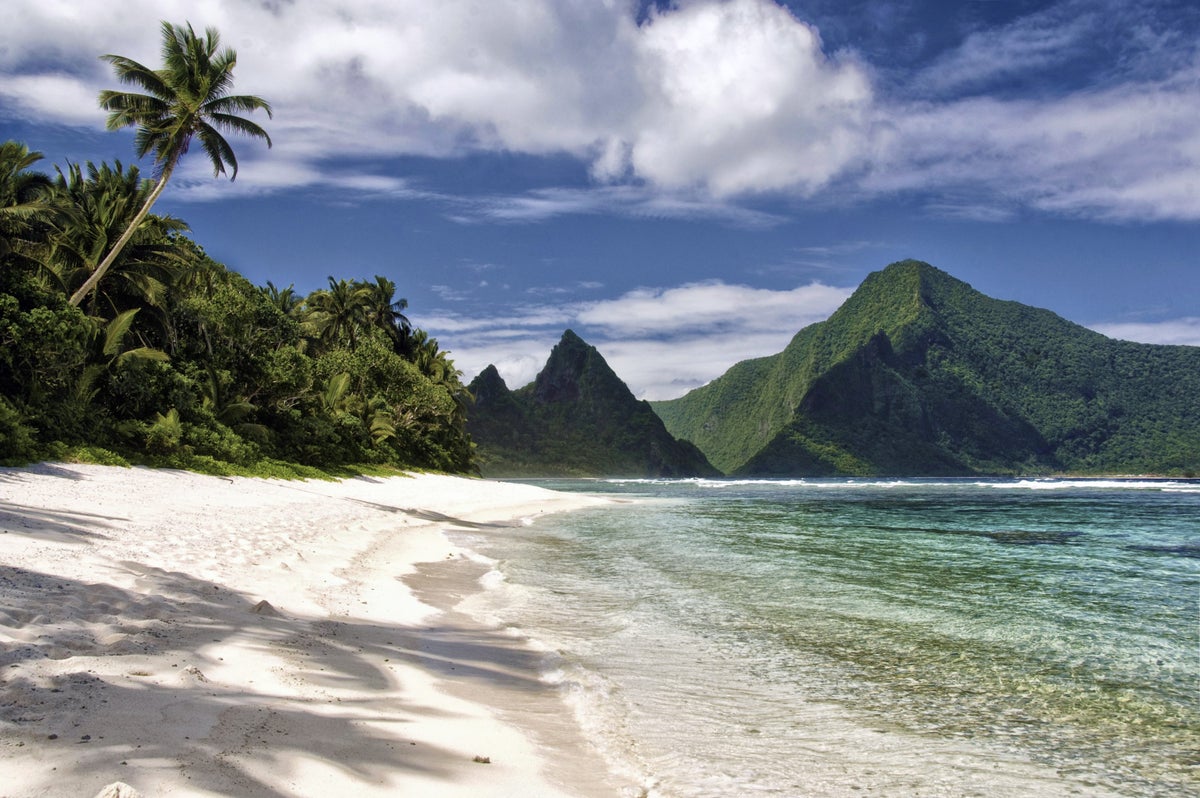
Where Is the National Park of American Samoa?
Nearest airports to the national park of american samoa, driving to the national park of american samoa, taking the bus to the national park of american samoa, getting around the national park of american samoa, birdwatching, hiking and beach walking, snorkeling and diving, whale watching, visitor center, best time to visit the national park of american samoa for ideal weather, best time to visit the national park of american samoa to avoid the crowds, best time to visit the national park of american samoa for whale watching, cheapest time to visit the national park of american samoa, annual events at the national park of american samoa, inside the park, towns near the national park of american samoa, ddw beach café, the equator restaurant, paradise pizza and restaurant, tisa’s barefoot bar, national park of american samoa facts, final thoughts.
We may be compensated when you click on product links, such as credit cards, from one or more of our advertising partners. Terms apply to the offers below. See our Advertising Policy for more about our partners, how we make money, and our rating methodology. Opinions and recommendations are ours alone.
The National Park of American Samoa is one of the most unique national parks in the U.S. National Park Service. This remote paradise is located in the South Pacific on 3 different islands. The National Park of American Samoa is built on the Samoan culture, which has been preserved and respected for over 3,000 years.
This national park has a world of adventure, both underwater and on land, just waiting to be explored. Along with adventure, the National Park of American Samoa has a rich cultural and natural history that tells an incredible story of this sacred land.
Each year, an average of fewer than 40,000 people come to explore the beauty of the National Park of American Samoa, but once others learn about this beautiful place, many more will want to make the journey to discover the natural wonder and awe that waits for them.
How To Get to the National Park of American Samoa
The National Park of American Samoa is located in the South Pacific. The park is composed of 3 different islands named Tutuila, Ofu, and Taʻū. This national park lies at the halfway point between New Zealand and Hawaii.
Pago Pago International Airport (PPG) is the only option for flying into the National Park of American Samoa area. This airport is about 34 minutes from the park . This airport exclusively services Hawaiian Airlines which provides 2 flights round-trip from Honolulu (HNL) each week. Flying is the only way to get to the island where the National Park of American Samoa is located. From this airport, you are a short drive from the entrance to the park.
From the airport, visitors will use a rental car or shuttle service to take them to the entrance of the National Park of American Samoa. The park is accessed from Route 001. Most travelers choose forms of public transportation for arriving at the park or in the nearby gateway towns.
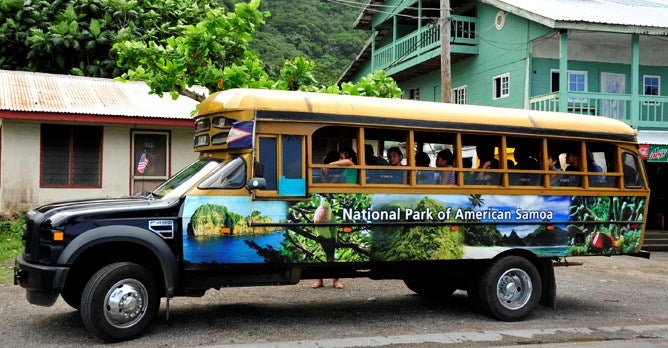
Taking the bus to your national park destination is always a great idea, as it allows you to sit back and enjoy the ride without the stress of traffic and navigating new roads. There are 2 bus options that take visitors to the National Park of American Samoa. These buses can be found in the Pago Pago Village and run daily, excluding Sundays.
The wait to board the bus is typically an hour long, so if you are in a rush, you may want to look into a different option for arriving at the park.
There are several ways to get around the National Park of American Samoa. One of the ways to get around is by private vehicle, but most people prefer to use the local aiga buses, which frequently take guests from one place to another throughout the park and surrounding villages. the National Park Service offers interactive and printable maps to help you in planning your park adventures.
What To See and Do at the National Park of American Samoa
The National Park of American Samoa is a true piece of paradise. With incredible weather, beautiful beaches, and plenty to explore on land and underwater, this national park has no shortage of things to do.
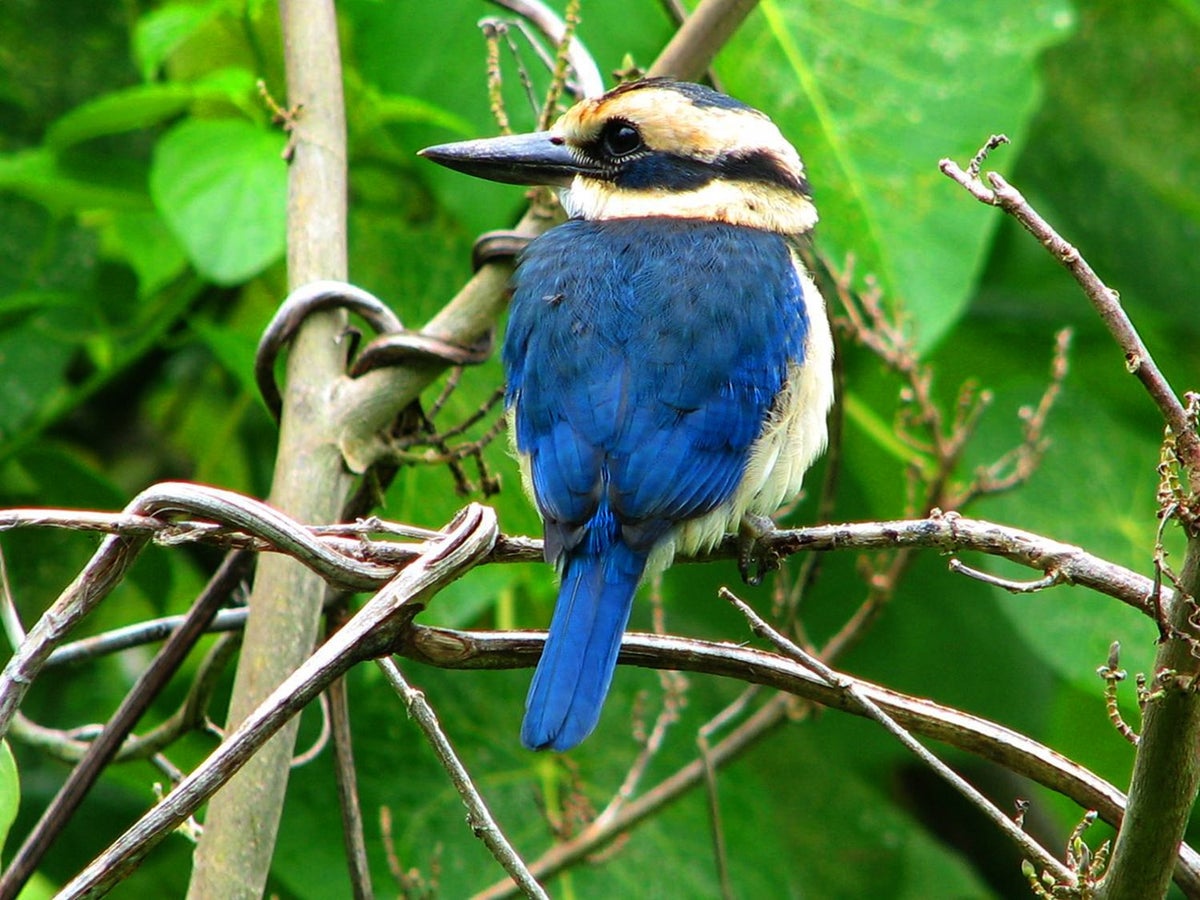
There are more than 35 species of birds that live in the National Park of America Samoa, making this an incredible place for bird-watchers . Some of the birds that can be seen here include shorebirds, rainforest birds, and seabirds. The Samoan starling, cardinals, and wattle honeyeaters are just some of the birds that tourists spot regularly. Glimpsing the birds that make their home in this national park creates memories to last a lifetime.
There is a variety of hiking opportunities to enjoy at the National Park of American Samoa. Visitors can choose from hikes through the rainforest, along the beach, and up steep hills. There are hiking options for all ages and abilities. Some of the popular hikes include the Mount ‘Alava Trail, the Pola Island Trail, Tuafanua Trail, and the Tumu Mountain Trail.
The beaches are incredible places to explore in this national park. Visitors enjoy spending lots of time on Ofu Beach, Two Dollar Beach, and Palagi Beach. Hiking and walking the beaches of this national park is an excellent way to see the wildlife that makes its home in the park and learn about the history and culture of the area.
Water surrounds the National Park of American Samoa, so naturally, fishing is a popular activity. T he waters surrounding the park have been used for ages by the Samoans, so some regulations must be followed out of respect for the Samoan people.
Before casting a line, visitors must obtain permission to fish from the village. Fishing is permitted each day of the week, with the exception of Sundays. Fishing is a fantastic way to get a better understanding of the way the waters surrounding the park have been used for thousands of years.
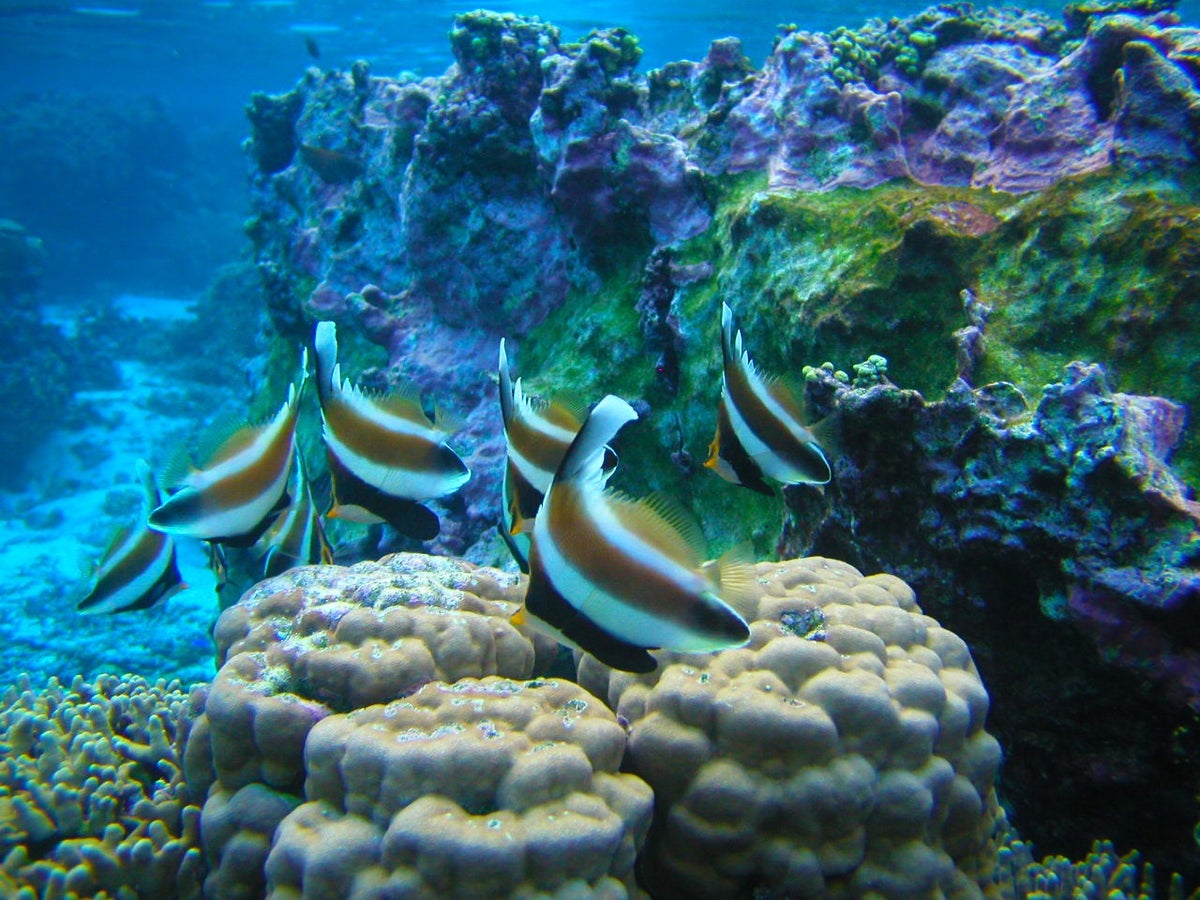
Snorkeling and diving are popular activities at the National Park of American Samoa. This is a superb way to see the vibrant world under the sea. There are over 950 species of fish that can be seen while snorkeling and over 250 kinds of coral.
The best area to snorkel and dive is off an island called Ofu. This area has a mesmerizing coral reef that stretches over 350 acres. The park does not have any options for renting snorkeling gear, so you will need to gather those in advance.
Snorkeling and diving at the National Park of American Samoa is a fantastic way to see the animals and plants that make their home in the waters surrounding the park.
Whale watching is an exciting activity at the National Park of American Samoa. From August to November, humpback whales can be spotted on their migration path back from the Arctic. Other marine animals that have been seen in this park include porpoises, sperm whales, and sea turtles.
The best area in the park for whale watching is on Fagatele Bay, which is in the southwestern area of Tutuila. Catching a glimpse of the marine mammals that make their home in the waters of the National Park of American Samoa is an experience that will create memories to last a lifetime.
The best way to start off your adventures at the National Park of American Samoa is to take time to explore the park’s visitor center. The park visitor center is located in Pago Pago, opposite the Pago Way Service Station.
This visitor center has park rangers stationed there each day to answer any questions you may have and help you to plan your excursions at the National Park of American Samoa. Many exhibits and displays offer information about the park’s culture and history. Visitors are also able to make purchases in the bookstore for souvenirs or necessities during their visit.
Best Times To Visit the National Park of American Samoa
A trip to the National Park of American Samoa is lovely no matter which time of year you are able to visit. However, there are better times to visit for different activities. Let’s explore some of the best times to visit the National Park of American Samoa.
The weather is always enjoyable at the National Park of American Samoa, but if you want to visit when the weather is at its best, plan to visit in August. The temperature during the day reaches up to the mid-80s, and the lows are in the upper 70s, making it a perfect time for adventures in the water and on land. There are also fewer guests in the park at this time of the year, making it a great time for a less crowded visit.
Visiting a national park without crowds is a dream come true for tourists. If you are hoping to visit the National Park of American Samoa without crowds, plan to come in March. March is when the fewest visitors come to this park, making it the perfect time to explore at your own pace.
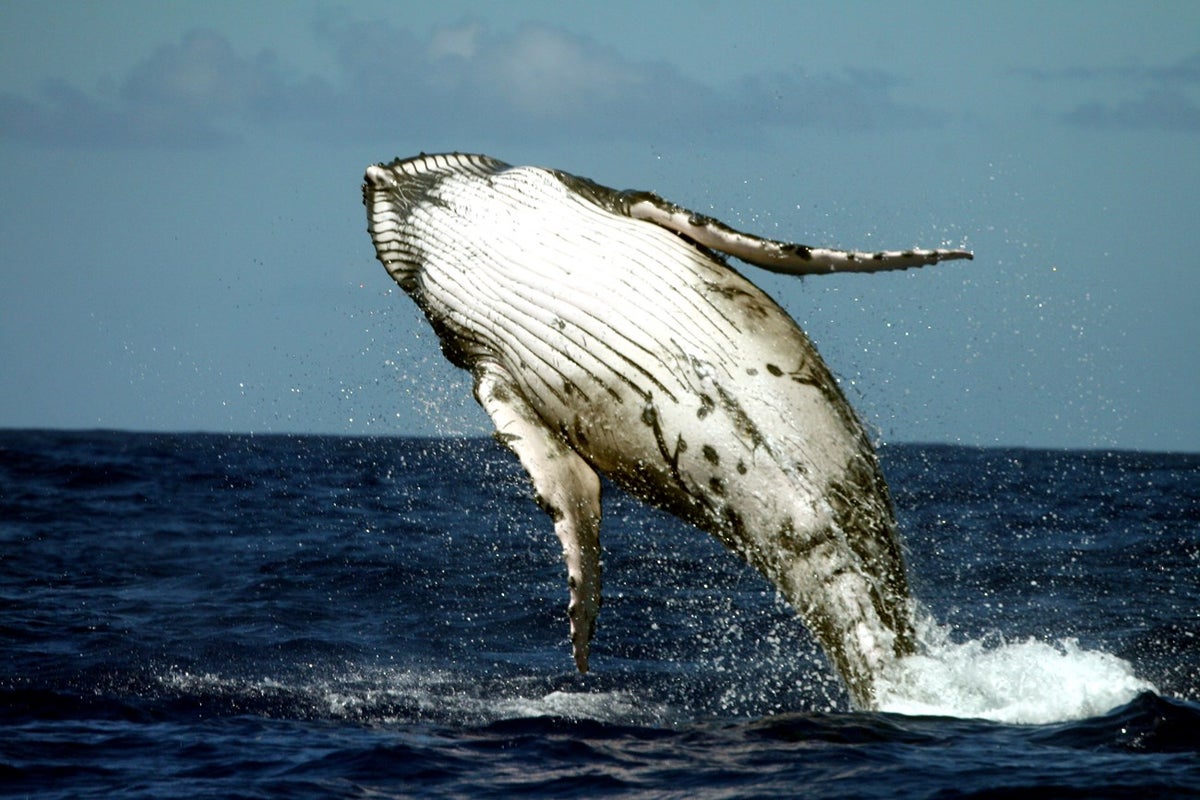
If you are hoping to spend time whale watching at the National Park of American Samoa, the best month to plan a visit is in October. The peak season for whale watching and spotting humpback whales in the waters of the National Park of American Samoa is from September to October, but the best time to experience this activity is in October. October has fewer visitors, making viewing these magnificent marine mammals a wonderful opportunity.
Traveling and saving money at the same time is a dream come true. Suppose you are hoping to go easy on your budget while traveling. In that case, you should plan to visit the National Park of American Samoa in March when the park has a drastic decrease in visitors Lodging and flights are much more affordable during this time. A trip to the National Park of American Samoa in March is a sure way to save money and have an incredible experience.
There are many activities that take place in or near the National Park of American Samoa on a regular basis, but there are also several events that take place on an annual basis. The locals and tourists alike look forward to these events each year. There’s an event for everyone throughout the year, from fishing contests to art festivals, from family-friendly races to traditional Samoan ceremonies.
Apia Arts and Crafts Festival
Each year in March, in the capital city of Samoa, the Apia Arts and Crafts Festival takes place. This event is one of the favorite festivals of tourists and locals. The Apia Arts and Crafts Festival showcases art by local artists from one of the 9 different Samoan islands. Attending and participating in this festival is a wonderful way to immerse yourself in the Samoan culture and take home some amazing one-of-a-kind souvenirs.
Independence Day
Independence Day is an exciting time at the National Park of American Samoa. May 31 is when Samoa celebrates its independence from New Zealand. The entire country celebrates with traditional dances, artwork, lively music, and delicious foods. This is a wonderful time to visit the National Park of America Samoa and get a glimpse of the sacred traditions of the Samoan culture.
Olympic Day
The American Samoa National Olympic Committee hosts Olympic Day each year in June on Utelei Beach. This event offers an extensive list of activities for all ages. Some of the activities included in this event include a 5K/10K Walk and Run, Zumba and exercise workouts, sailing, and water sports.
This is a time when visitors can let loose and do some of the activities that they enjoy. If Olympic Day sounds like it is something you’d like to participate in, try planning your vacation in late June to ensure you are there at the right time.
National Park Week
Every year in April, each U.S. national park celebrates National Park Week. All park fees are waived during this week, and there are additional activities, events, and workshops that take place to celebrate the National Park Service’s contributions and efforts to protect and preserve the lands of America.
A visit to the National Park of American Samoa during National Park Week is the ultimate experience for visitors of every age. Planning a trip during this weeklong event guarantees countless opportunities for fun and learning.
Where To Stay in the National Park of American Samoa
Planning where to stay during a vacation is always one of the major decisions to be made. The National Park of American Samoa doesn’t have any traditional lodging options or campgrounds on its premises, but there are several options for places to stay near the park.
There are no options for lodging or camping within the National Park of American Samoa since this land is not owned by the U.S. government. At one point, there was a program called Homestay, where visitors could stay in the home of a local inside the park boundaries. At this time, the Homestay program is not an option, but it may open up again in the future. If you want to stay near the park, your best option is to book accommodations in one of the nearby towns.
There are 2 towns near the National Park of American Samoa that make great places for a base camp during a trip to the park. Both of these towns are located on Tutuila Island.
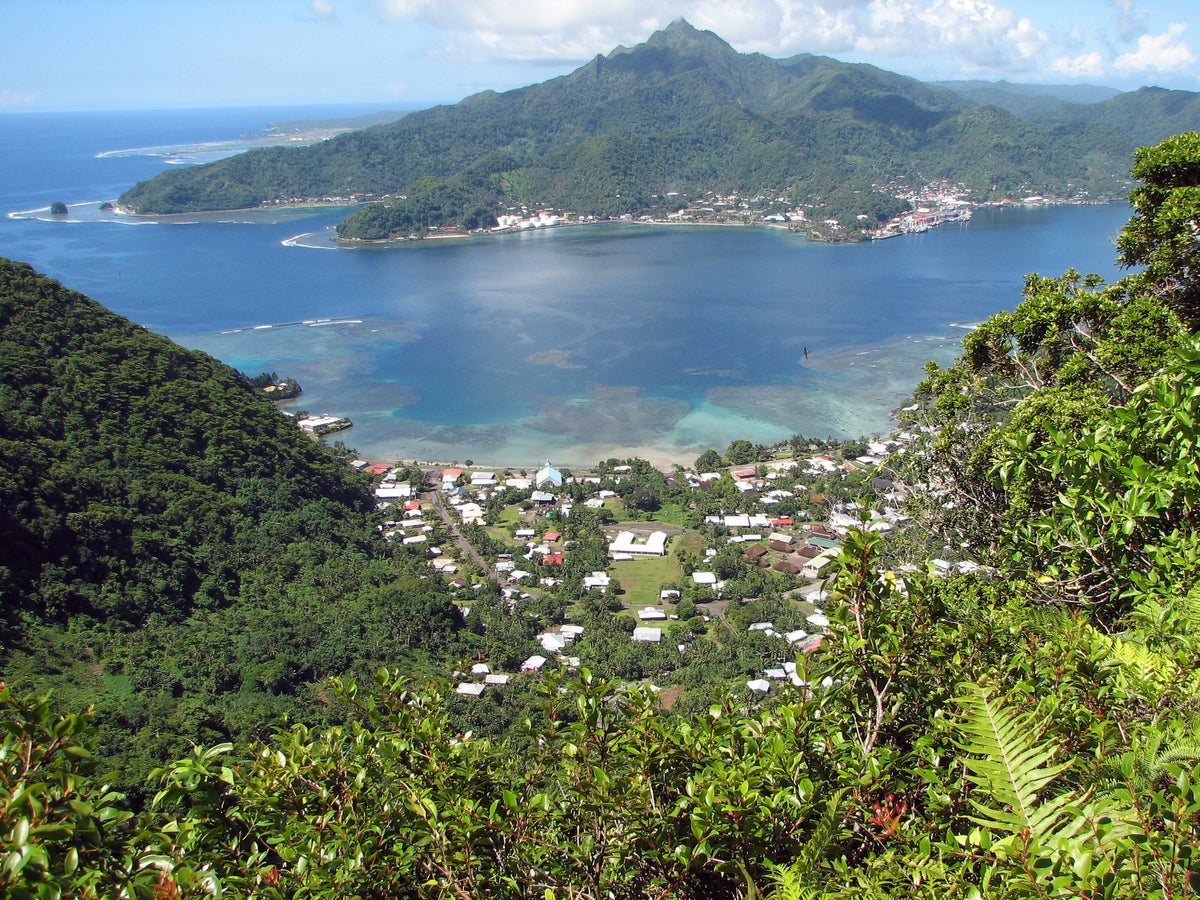
Pago Pago is just an 8-minute drive from the National Park of American Samoa. This city is the capital city of American Samoa and has many places for lodging, dining, and recreation. This town has many options for lodging. Popular places to set up a home away from home include hotels and locally-owned inns, private vacation rentals, and motels.
Food enthusiasts enjoy the variety of restaurants in Pago Pago. There are numerous options for dining in this town, including freshly-caught seafood restaurants, family-owned cafés, and authentic Samoan diners. Whether you are seeking comfort food from home or a new culinary experience, Pago Pago has something perfect for every palate.
Pago Pago is in an excellent, convenient location for exploring the National Park of American Samoa, but it also is in a wonderful location for other types of recreation. This town has miles and miles of hiking trails, several beaches, a marine sanctuary, and an ocean center, making boredom impossible.
Its proximity to the National Park of American Samoa and its abundance of options for accommodations, dining, and recreation make Pago Pago an obvious choice when visiting this national park.
Tafuna is a village on the east coast of Tutuila Island, 35 minutes from the National Park of American Samoa. Tafuna makes a great place to set up a home base during your national park adventure because it has many outstanding options for places to stay, eat, and explore.
The village has a variety of lodging options within its boundaries. From luxury hotels to all-inclusive resorts, from quaint inns to budget-friendly motels, Tafuna has something for every traveler . Most visitors choose to stay at a chain hotel or resort for a superior experience.
The dining scene is a treat in Tafuna. There are several locally-owned restaurants, cafes, and diners, as well as a few chain restaurants to choose from. No matter what you find yourself craving, there’s a perfect hunger solution in Tafuna.
Tafuna is an excellent place for adventure and recreation. There are museums and beach parks nearby. Visitors enjoy booking tours of the mountains, seas, and beaches of the area. Other activities include kayaking, snorkeling, and hiking. With so many restaurants, lodging options, and opportunities for fun, Tafuna makes a great choice for setting up a home base while visiting the National Park of American Samoa.
Where To Eat in the National Park of American Samoa
There aren’t any restaurants in the National Park of American Samoa, but there are numerous options just a few miles from the park. No matter what you crave, you can find something to hit the spot just a few minutes down the road. Let’s take a look at some of the popular restaurants near the National Park of American Samoa.
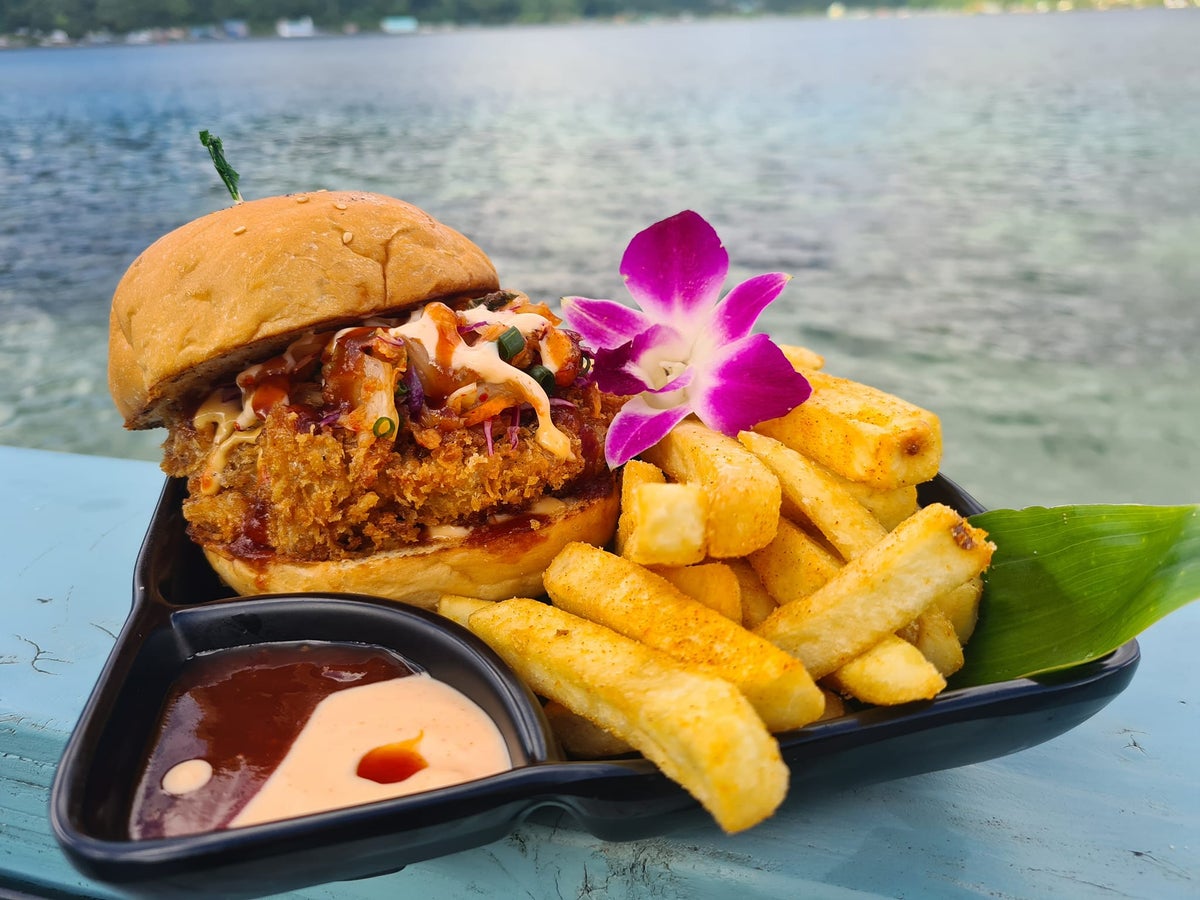
DDW Beach Café is located approximately 2.5 miles from the National Park of American Samoa. This restaurant serves breakfast and lunch right on the island.
The menu at DDW Beach Café features a wide variety of American favorites and Samoan specialties. Exciting menu options include freshly caught swordfish and salmon, biscuits and gravy, sweet chili chicken wings, sashimi, and oxtail soup. Whether you crave comfort foods from home or want to try a local specialty, you won’t regret dining at DDW Beach Café. Your tastebuds will be in paradise.
The Equator Restaurant is located 2.5 miles from the National Park of American Samoa in the Tradewinds Hotel. The Equator Restaurant is open daily for breakfast, lunch, and dinner.
This restaurant offers a lovely mixture of American and Samoan cuisine made with fresh, local produce and seafood. Customers rave about the fish and chips, the Equator salad, and the club sandwich. Reasonable prices, excellent customer service, amazing menu items, and the proximity to the National Park of American Samoa make The Equator Restaurant a top choice for dining during your vacation.
Paradise Pizza and Restaurant is a great place to refuel during your trip to the National Park of American Samoa. This restaurant is only 5 minutes from the park and serves breakfast, lunch, and dinner 6 days a week.
Don’t be fooled by the name of this restaurant. Paradise Pizza and Restaurant serves so much more than pizza. Paradise Pizza has everything from pancakes and omelets for breakfast to steaks, pasta dishes, and gourmet pizzas for lunch and dinner. Popular menu items include the New York Steak, the seafood pasta, and the Paradise deluxe pizza.
Should hunger strike while you are exploring the National Park of American Samoa, you’ll want to stop by Paradise Pizza and Restaurant for an incredible meal you won’t forget.
Tisa’s Barefoot Bar is 15 minutes from the National Park of American Samoa. This is a wonderful dining option that offers a true paradise experience while enjoying Samoan-style specialties on a private beach. Tisa’s Barefoot Bar has an impressive menu of organic dishes for breakfast, lunch, and dinner. Each dish is lovingly prepared by a famous chef who uses fresh produce from the restaurant’s garden.
Dining at Tisa’s Barefoot Bar is a fantastic option for dining and experiencing the Samoan culture. The restaurant features themed nights and special events regularly, which could add some pizazz to your vacation at the National Park of American Samoa.
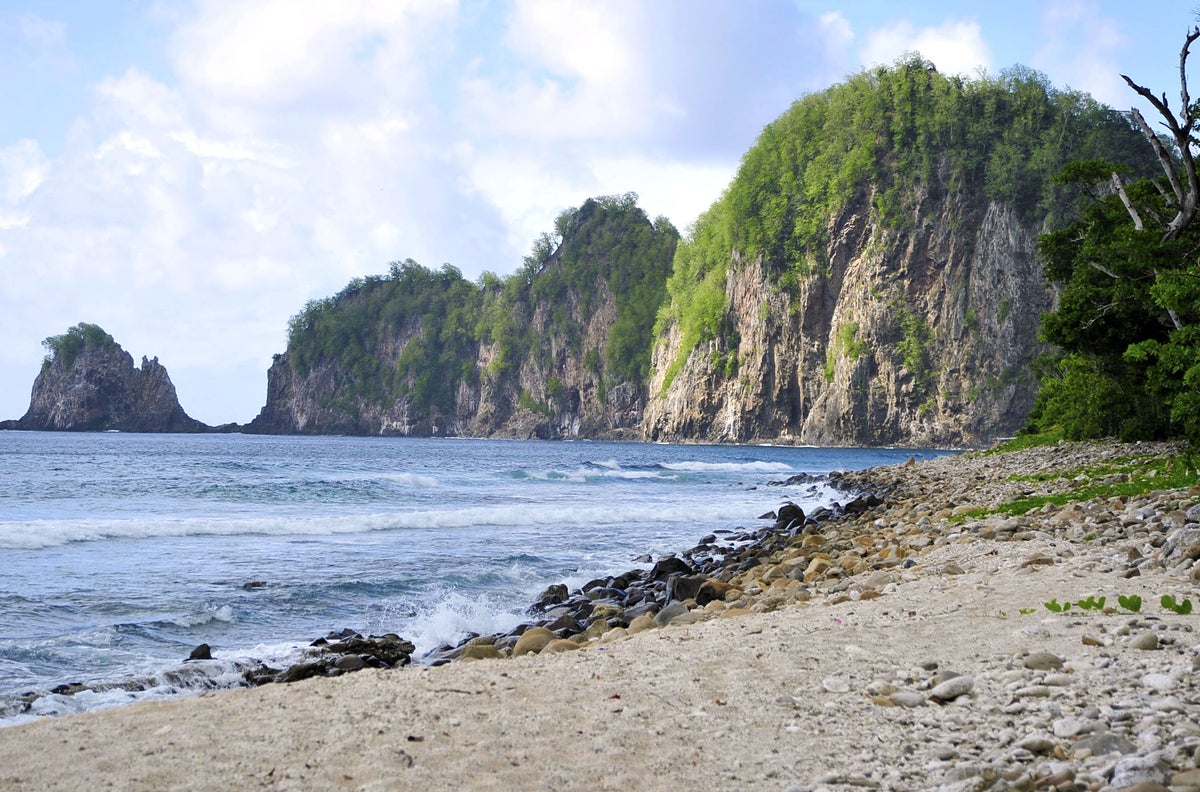
1. A New National Park
The National Park of American Samoa was established as America’s 50th national park on October 31, 1988. This national park is unique in that the National Park Service actually leases the land from the individual villages that own the land.
2. One of a Kind
The National Park of American Samoa is the only U.S. national park south of the equator. This national park is a tropical paradise with sights and experiences that are one of a kind.
3. What’s in a Name?
The word “Samoa” means sacred earth. The National Park Service goes above and beyond to protect the beliefs, customs, and traditions of the Samoan culture, which has been thriving for 3,000 years.
4. An Abundance of Animals
The National Park of American Samoa is home to a wide variety of animals. Over 950 types of fish, 180 bird species, 8 kinds of mammals, and over 250 coral species are present in the park. Some of the animals commonly spotted in the park and its waters include humpback whales, sea turtles, dolphins, tropical birds, and bats.
5. Highs and Lows
The highest point of elevation in the National Park of American Samoa is at Olamatimu. This point in the park measures 3,056 feet high. The lowest point in the park is the Pacific Ocean, which is at 0 feet in elevation.
6. Rainforest Communities
The National Park of American Samoa protects 5 separate rainforest types. These different types include coast, montane, lowland, and cloud rainforests. There is no other rainforest in the U.S. like the ones found at the National Park of American Samoa.
7. Location Location
The National Park of American Samoa is located 2,600 miles southwest of Hawaii and 1,800 miles northwest of New Zealand. This is the most remote national park in all of the U.S. National Park Service.
8. Endangered Animals
There is a variety of animals that make their home within the boundaries of the National Park of American Samoa. Some of these endangered species include the blue whale, sperm whale, hawksbill turtle, leatherback turtle, and the Central South Pacific green turtle.
There are also several animals that are threatened, including the olive ridley turtle, giant manta ray, and the Indo-West Pacific scalloped hammerhead shark. The National Park Service goes above and beyond to protect these animals and offer them a safe place to call home.

9. Native Mammals
There are 3 bat species that are native to the National Park of American Samoa. 2 of these species are fruit bats, and the other is an insect-eating bat. These bats can be seen roosting in the trees in different areas of the park.
10. Fa’asamoa–The Samoan Way
Visitors to the National Park of American Samoa are asked to respect the traditions and culture of the villagers who call this land home. There are many different ways to uphold the customs of this sacred land. Some ways to do this include asking permission to take photographs and use the beach. Visitors are expected to dress modestly and understand that many things are not permitted on Sundays, which is the day of rest for the Samoans.
Visiting the National Park of American Samoa is a completely different experience than what you expect from other national parks. This park is filled with culture, tradition, history, and beauty that can’t be found elsewhere. Whether you visit to learn about a historical culture or to discover rainforest ecosystems, there’s something for everyone to enjoy here. Book your trip to the National Park of American Samoa and discover the beauty and wonder that awaits you.
Frequently Asked Questions
How much does it cost to enter the national park of american samoa.
The National Park of American Samoa is a no-entry-fee park.
How many days should I spend at the National Park of American Samoa?
It is recommended to stay a minimum of 3 days and a maximum of 10 days at the National Park of American Samoa. Most people who stay less than a week wish they would have stayed longer. There is so much to explore in this national park; the longer the stay, the better the experience.
What is the weather like at the National Park of American Samoa?
The weather doesn’t have any major changes at the National Park of American Samoa. Throughout the year, it is mainly warm, humid, and rainy. The dry season is from June to September and is when the park is a bit cooler and drier. October through May is the summer season, which usually has more rain.
Is there Wi-Fi available at the National Park of American Samoa?
Public Wi-Fi is available throughout the park. Be sure to take into consideration that in some areas of the park, the Wi-Fi may be unreliable.
Was this page helpful?
About Amar Hussain
Amar is an avid traveler and tester of products. He has spent the last 13 years traveling all 7 continents and has put the products to the test on each of them. He has contributed to publications including Forbes, the Huffington Post, and more.
INSIDERS ONLY: UP PULSE ™

Get the latest travel tips, crucial news, flight & hotel deal alerts...
Plus — expert strategies to maximize your points & miles by joining our (free) newsletter.
We respect your privacy . This site is protected by reCAPTCHA. Google's privacy policy and terms of service apply.
Related Posts
![tours of american samoa national park Virtual Tours of the 63 Iconic U.S. National Parks [2024]](https://upgradedpoints.com/wp-content/uploads/2022/11/Arches-National-Park-View.jpg?auto=webp&disable=upscale&width=1200)
UP's Bonus Valuation
This bonus value is an estimated valuation calculated by UP after analyzing redemption options, transfer partners, award availability and how much UP would pay to buy these points.
Seeker is the social platform to find and share the places you love.
0 Places . 0 Trips and Guides.
Please enter your email
- Seeker for Brands
- Become a Brand Ambassador
- Let’s connect
New to Seeker? Join for free
Already have an account? Login
- American Samoa
National Park of American Samoa: The Complete Guide for 2023
Sustainable travel expert, adventure seeker
Oslo, Norway
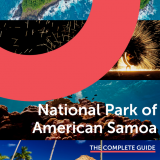
With acres upon acres of verdant tropical rainforests, pristine beaches, and teeming coral reefs, National Park of American Samoa is a true hidden gem. Almost one-third of the park’s surface is underwater and home to an astounding 250 coral and 930 fish species, making it one of the country’s marine biodiversity hotspots. The only downside? This island isn’t easy to reach. Due to its remote location in the South Pacific (it’s the only national park south of the Equator!), it counts among the country’s least-visited national parks with only a little over 5,000 people ticking it off their bucket list every year.
Where is the National Park of American Samoa

As its name says, the National Park of American Samoa (or American Samoa National Park) is located on the US territory of American Samoa , halfway between Hawaii and New Zealand. The park is spread across three islands: Tutuila , Ofu , and Ta’ū .
Facts About American Samoa National Park

- National Park of American Samoa was first opened in 1993 when, after years of negotiations, Samoan chiefs granted the National Park Service permission to lease the land from local villages for 50 years.
- Besides protecting its flora and fauna, the park is committed to preserving the traditions of the Samoan culture, fa’asamoa .
- While one-third of the plants in the National Park of American Samoa are endemic species that can’t be found anywhere else in the world, its only native mammals are bats, including the giant fruit bat with a wingspan of over 3 feet.
- American Samoa is the last place to celebrate New Year’s Eve .
The Best Time to Visit

Located a mere 14 degrees south of the equator, American Samoa boasts a tropical climate with warm temperatures, frequent rain showers, and high humidity all year round. The best time to visit is between June and August when the weather gets slightly cooler and drier. The rainy season in National Park of American Samoa runs through winter (from October to May), so that’s when you are most likely to experience tropical storms. They can arise at a moment’s notice, so be sure to check the weather forecast before putting on your hiking boots.
Hours of Operation

The National Park of American Samoa is open 24 hours a day, year-round. The visitor’s center is open on weekdays from 8:00am to 4:30pm and closed on public holidays. Some areas of the park are occasionally closed due to trail maintenance and safety measures. For current status and updates, check out the park’s alerts on closures .
Note: Although the National Park of American Samoa remains open, all international flights to American Samoa are currently suspended due to COVID-19.
Entrance Fees

The entrance to the National Park of American Samoa is free.
Flights to American Samoa National Park
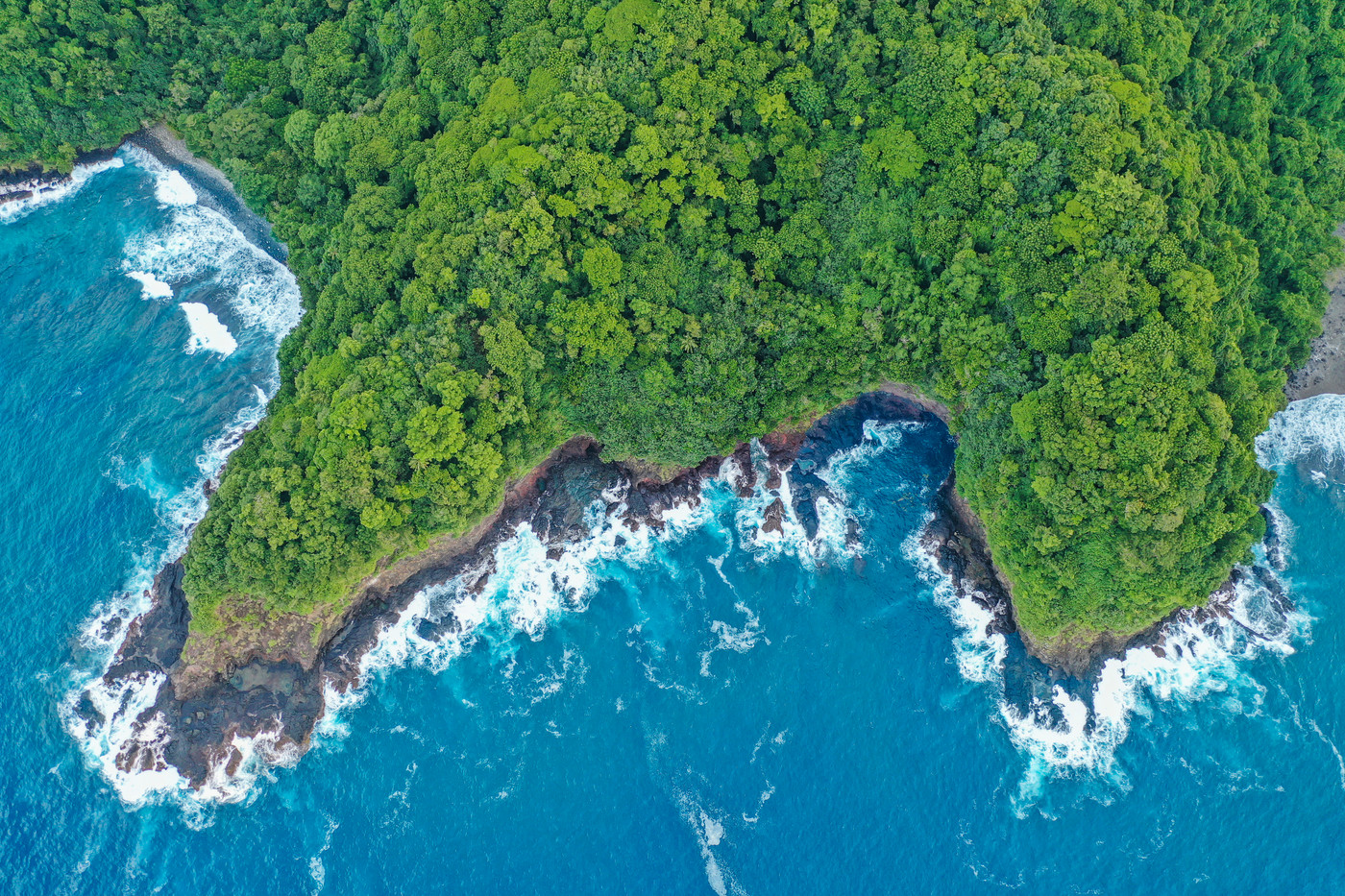
There is only one way to get to American Samoa from the mainland United States: a five-hour Hawaiin Airlines flight from Honolulu. If you’re visiting from Australia, New Zealand, or Fiji, you’ll land at the International Airport at Upolu in neighboring Western Samoa. From there, hop on a half-hour flight to Pago Pago, the capital of American Samoa. Samoa Airways will get you to the rest of the park, but keep in mind that there are only four weekly flights to Ta’ū and one to Ofu. If you are feeling adventurous, you can catch the occasional passenger ferry to make the crossing.
Tours at American Samoa National Park

Take a sensational (medium to difficult) hike with South Pacific Watersports and Fitness . Tours can be booked at the visitor’s center in Pago Pago. For less strenuous excursions, TourAmericanSamoa will have you covered with their historical tours and visits to Samoan rainforest villages. Not what you’re looking for? They’ll be happy to put together a customized tour just for you.
National Park of American Samoa Lodging

American Samoa Hotels
There is no shortage of accommodation ranging from traditional fales (beach huts) to inns, hotels, and resorts close to the National Park of American Samoa. Here are our favorites:
- Maliu Mali Beach Resort
- Sadie’s by the Sea
- Sadie Thompson Inn
- Moana O Sina
- Tradewinds Hotel
- Le Falepule
- Pago Airport Inn
- Tisa’s Eco Fales
- Amouli Beach Fales
- Vaoto Lodge
American Samoa Airbnb
Several modest Airbnb lodgings are dotted around the harbor of Pago Pago, within a short drive from the park. The islands of Ta’ū and Ofu have no Airbnb rentals.
American Samoa Camping
You’ll have to leave your camping gear at home; camping is prohibited on the entire territory of the National Park of American Samoa.
Hiking in the National Park of American Samoa

Although a handful of easy trails wind through the National Park of American Samoa, the steep terrain of unstable volcanic soils combined with frequent heavy rainfalls can turn your hiking trip into a perilous adventure. Be warned that the park lacks any advanced search facilities (the nearest Coast Guard is in Hawaii). Take extreme caution as there may be no one to rescue you.
Easy, perfect for families:
- Lower Sauma Ridge Trail (0.4 mile out-and-back)
- Pola Island Trail (0.6 mile out-and-back)
Moderate, fairly strenuous:
- Mount ‘Alava Trail (6.1 miles out-and-back)
- Si’U Point Trail (5.4 miles out-and-back)
Difficult, experience recommended:
- Tuafanua Trail (1.1 mile out-and-back)
- Mount Alava Trail (5.3 miles out-and-back)
- Tumu Mountain Trail (5.4 miles out-and-back)
Best Things to Do in American Samoa National Park
Start at the visitor’s center in pago pago.
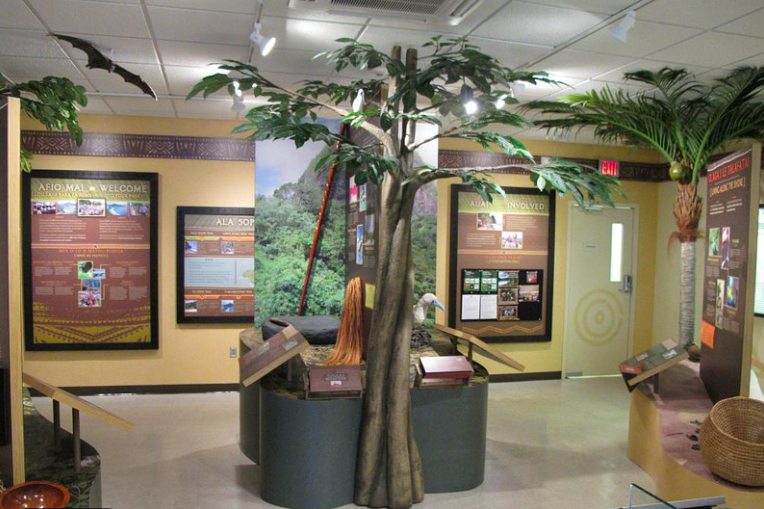
Start at the visitor’s center in Pago Pago . Get an insight into the area’s rich history and culture at the visitor’s center of the National Park of American Samoa. The center is located in Pago Pago, a 30-minute drive from the park.
Snorkel coral reefs on Ofu island

The small volcanic island of Ofu is one of the world’s most spectacular snorkeling locations with crystal-clear waters and enchanting reefs. The only catch is, there is nowhere to rent equipment on the island, so make sure to bring your own.
Visit Forbidden Bay on Tutuila Island

With its waters teeming with bright, soft corals and technicolored fish, Forbidden Bay is among the most beautiful bays in the South Pacific. It is a short walk from the pretty village of Fagasā , right at the edge of the National Park.
Go scuba diving at Fagatele Bay

There are few places on the planet better suited for exploring the vibrant underwater world than the National Marine Sanctuary of American Samoa . The star attraction is the 20-feet tall Porites coral dubbed Big Momma.
Explore the National Park’s rainforest birds

Look out for colorful, tropical doves and imperial pigeons, lupe, featured in countless Samoan proverbs and expressions. If you’re lucky, you’ll catch a glimpse of the bristle-thighed curlew, a rare migratory bird from Alaska.
Relax on Ofu beaches
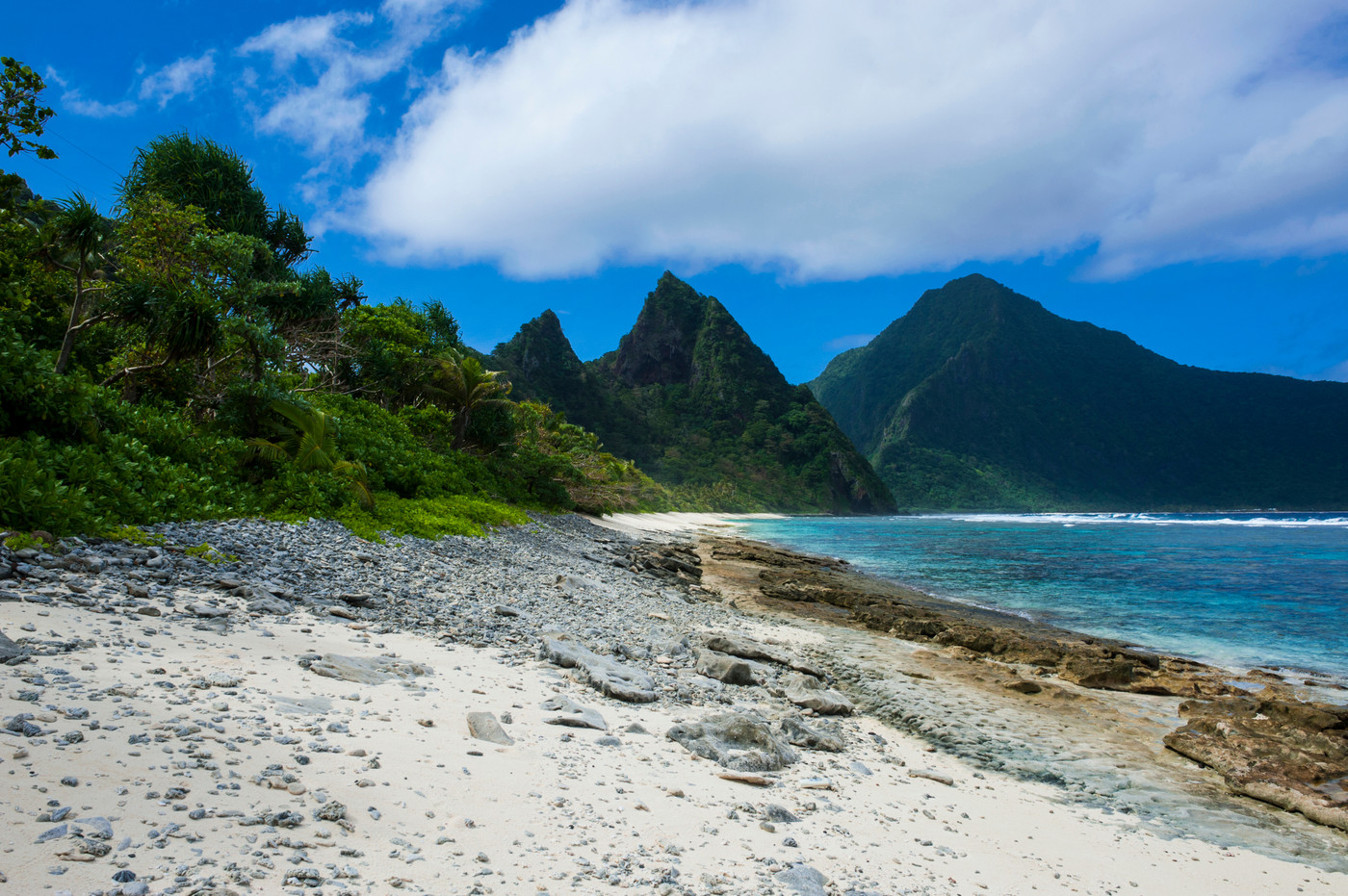
The soft pink stretches of sand surrounded by jagged volcanic peaks of the Ofu island count among the world’s most stunning and secluded beaches. The calm turquoise water is perfect for swimming and snorkeling.
Live like a local in Samoan villages

Join the park’s homestay program to spend a few days living with locals in a rainforest village. And the best part is, you’ll be helping your Samoan hosts with everything from fishing to gathering fruit in the rainforest and collecting giant clams on the reef.
More Things to in American Samoa
Visit historic wwii sites on tutuila island.

Tutuila Island is the perfect place for history buffs. Blunt’s Point gun batteries and Breaker’s Point naval guns were set up here to protect Pago Pago after the attack on Pearl Harbor. The Japanese, however, only attacked once. Ironically, the missile launched from a submarine landed on the island’s only Japanese shop.
Visit Jean P. Haydon Museum in Pago Pago
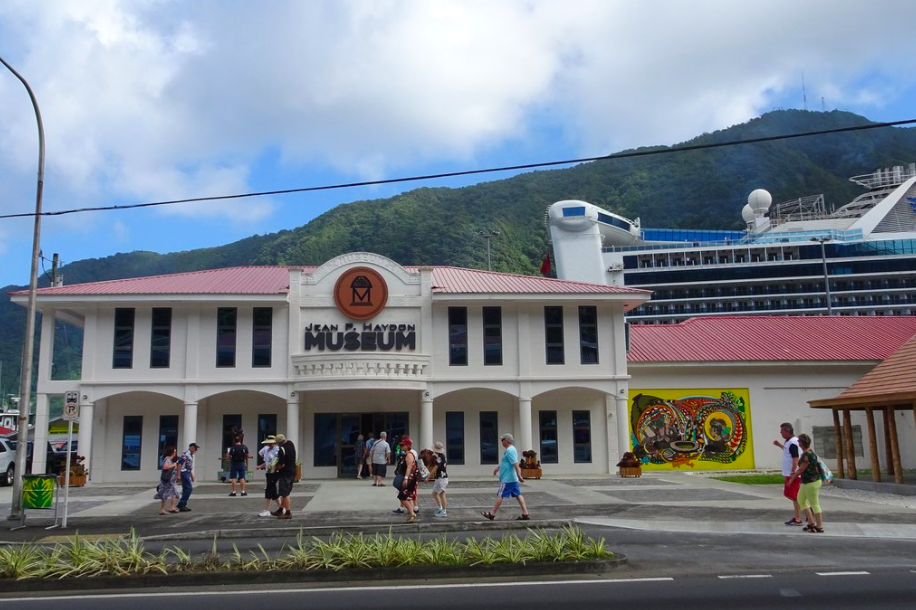
The Jean P. Haydon Museum , named after the wife of the governor who welcomed the Apollo astronauts in 1970, displays an eclectic mix of Samoan artifacts and moon rocks, along with the American Samoa flag that was taken to the moon on Apollo 11.
Go whale watching near Namua

Between August and November, keep an eye out for southern humpback whales on their migratory voyage from the Antarctic. You can spot whales and their calves from almost any spot on the island that overlooks the ocean.
Watch a Fiafia dance show
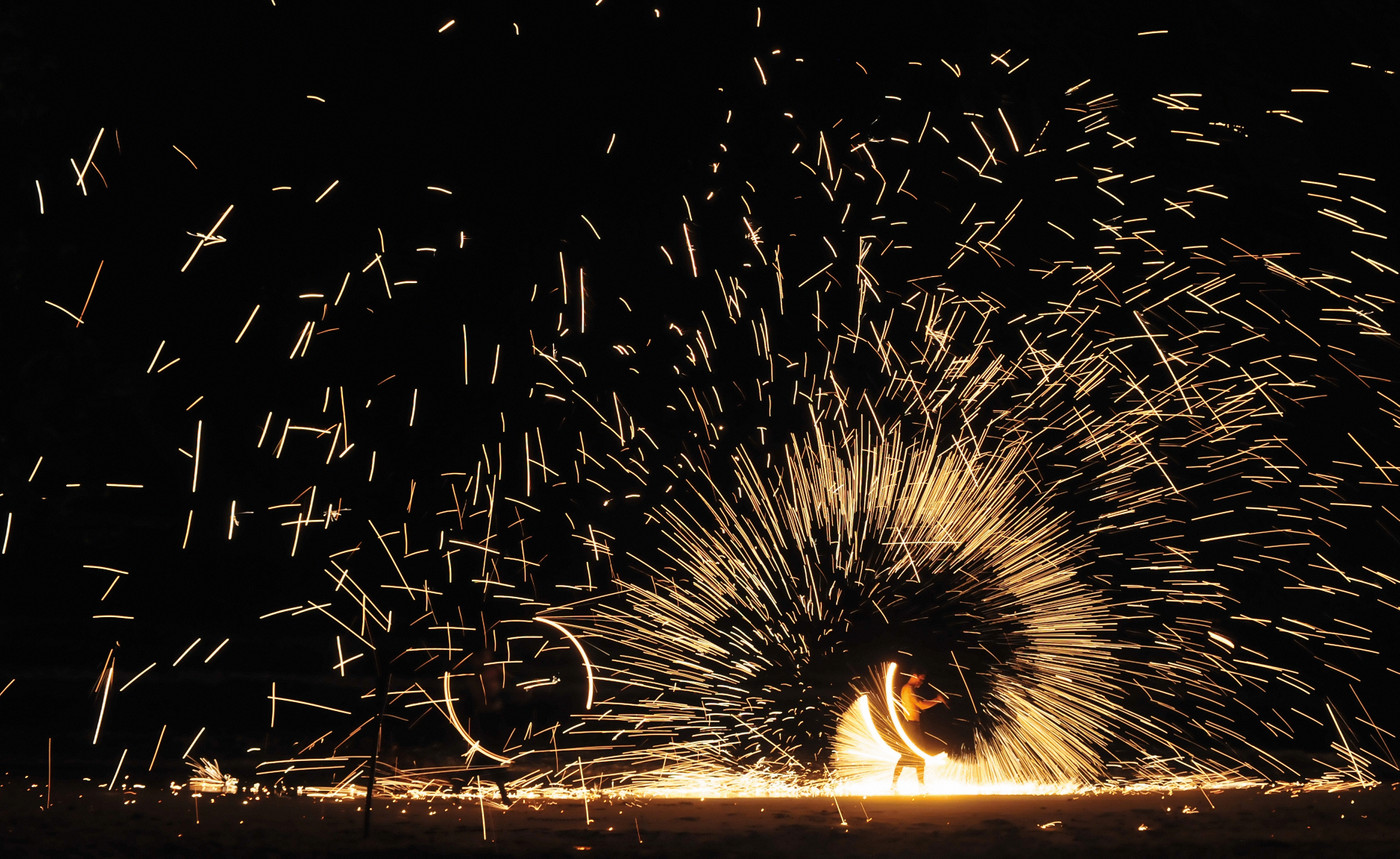
No visit to American Samoa is complete without experiencing fiafia, a performance of Polynesian slap and fire knife dances. Fiafia nights are traditionally accompanied by feasts of local delicacies of breadfruit, taro leaves in coconut cream, raw fish, and seafood cooked on hot volcanic rocks.
Watch the sun set and spend a night star gazing
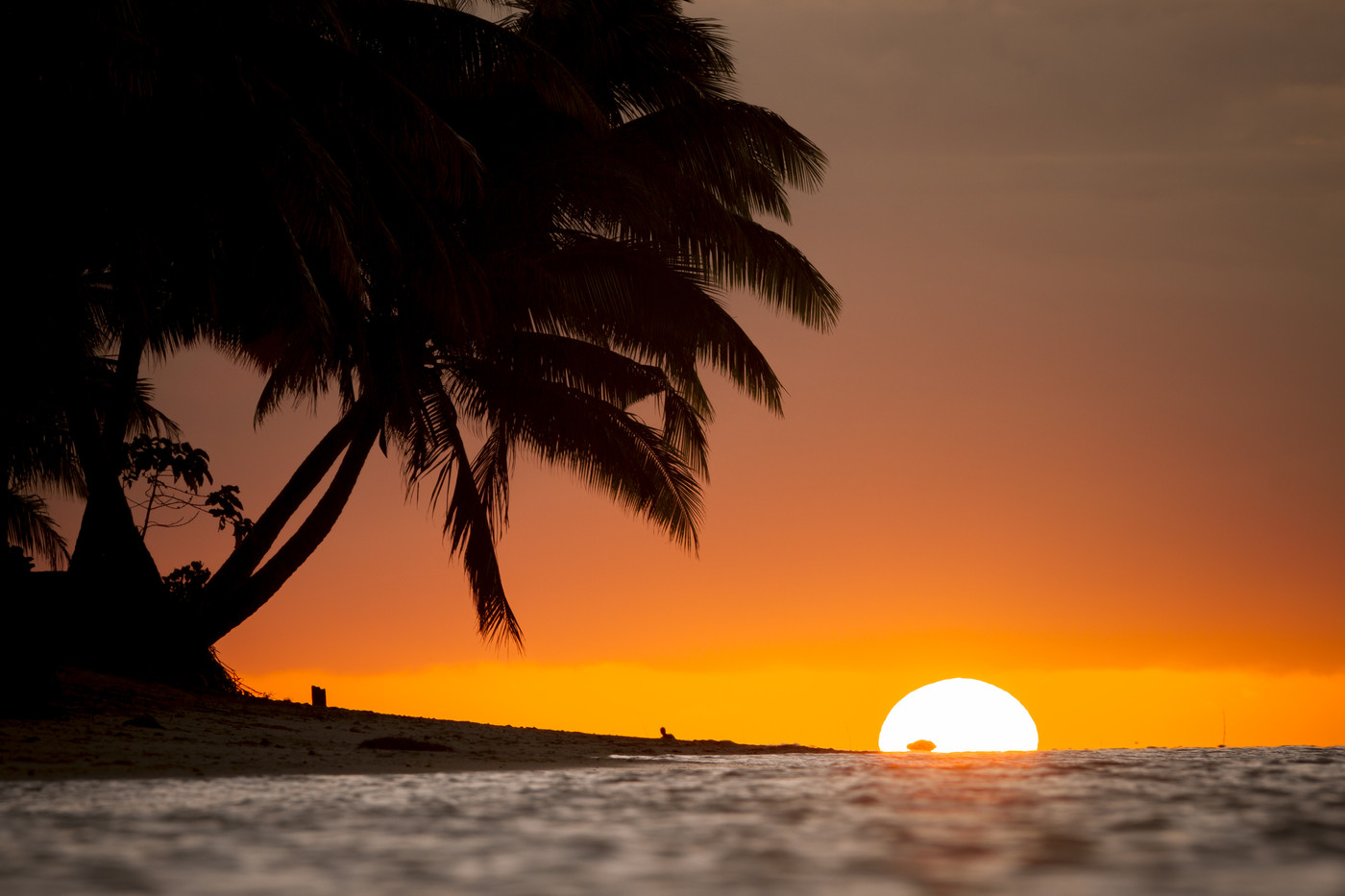
Clear air and dark night skies make for a spectacular stargazing experience. The south coast of Tutuila’s island offers breathtaking views of the Southern Cross constellation and plenty of shooting stars.
Visit the sacred site of Saua on Ta’ū island

The Saua village on Ta’ū Island is home to the earliest Polynesian settlements. Legend has it that Saua was the spot where the god Tagaloa created humans before sending them out to Polynesia.
Spend a day in Pago Pago
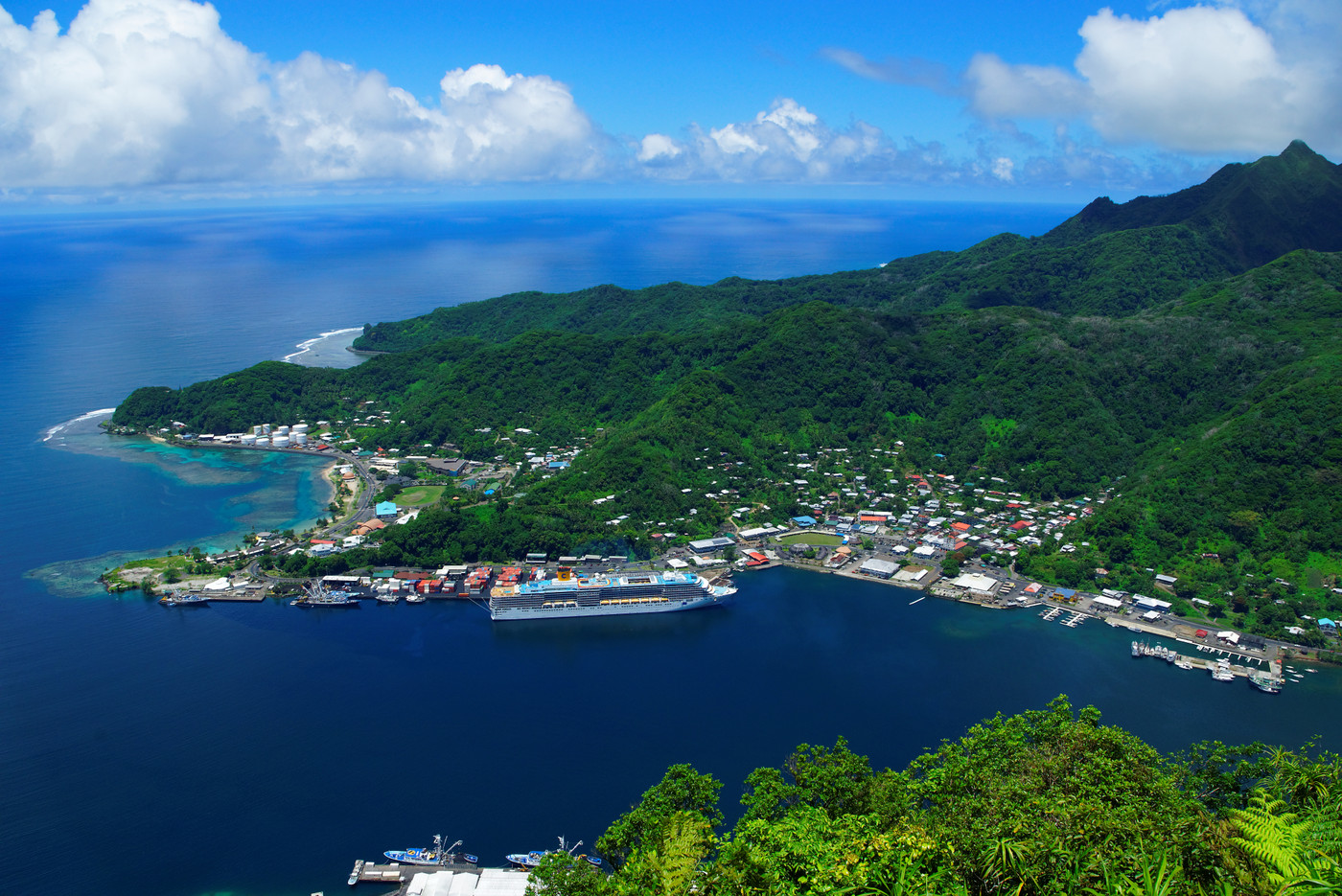
Tucked away in the crater of an extinct volcano, Pago Pago holds the unlikely record of being a harbor with the highest annual rainfall in the world. While in Pago Pago, take a ride on a colorful aiga bus with blasting music. There are no schedules and no stops—simply knock on the window when you want to get out.
Try Samoan panikeke at Fagatogo Market

Don’t leave without trying Samoan panikeke , fried donuts with tropical banana flavor. We recommend sampling the favorite Samoan street food at Pago Pago’s Fagatogo market while you people watch and hang out with the locals.
You might like
- North America
List of All 63 National Parks in the US by State | 2023
The last place on earth to celebrate new year's eve, everglades national park: the complete guide for 2023, capitol reef national park: the complete guide for 2023.
- Washington State
Olympic National Park: The Complete Guide for 2023
Yosemite national park: the complete guide for 2023.
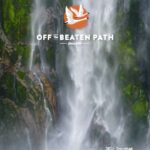
Maimoana: American Samoa
Tropical Islands, Culture, and the National Park of American Samoa

Pago Pago, American Samoa

Matais (Family Patriarchs)
Credit: NPS

Tutuila Coastline

Blunt Point

Night Sky over Ofu Island

Tropical Fish

Traditional Samoan performance
- Overview & Pricing
Trip Details
- Related Trips
Settled by seafaring explorers three thousand years ago, the Samoan archipelago is the cultural hub of the Polynesian wheel. American Samoa – the only U.S. Territory south of the equator – is a true off the beaten path paradise, with rugged volcanic mountains, dramatic shorelines, empty beaches, colorful coral reefs, warm azure waters, and dense tropical forests. On this explorer’s journey, you’ll visit three islands, Tutuila, Ta`ū, and Ofu, each containing sections of the National Park of American Samoa.
Arrive into Pago Pago, American Samoa’s territorial capital. From a waterfront hotel, we head out for a variety of adventures over the course of three days, traveling by boat to visit with locals on the 375-acre Aunu`u Island and hiking along the Blunts Point Trail to a scenic high point.
Our next stops are the islands of Ta`ū and Ofu. First, we’ll fly to Ta`ū, half of which is the protected National Park of American Samoa, exploring the island’s archaeological sites and beaches. Later, we travel by boat to Ofu Island, for three nights and days spent hiking, snorkeling, and getting to know their share of the national park, beautiful mountains, lagoons, beaches, and coral reefs.
We return to Tutuila by plane, with time to take in more of the island’s features –Fagasā Bay to Afona Bay, Mount Alava, Maunaloa Ridge, and coastline. We take a walking tour of the village of Fagatogo and visit the National Marine Sanctuary of American Samoa and the National Park of American Samoa Visitor Center.
After a farewell dinner, we take the late-night flight to Honolulu.
Small Group Adventure
Departure Dates
8 days / 7 nights
Trip begins/ends
*Price per person based on double occupancy. Trip price includes all lodging, meals, ground transportation, guide services and activities as described in this itinerary.
Call Toll-Free 800-445-2995
Do you want to customize this trip.
We customize trips all the time! Email us today: [email protected] .
- Trip Highlights
What’s Included? Everything you need, plus everything you want.
- National Park of American Samoa: You'll visit three volcanic islands and walk the national park's beaches and rain forests, explore crystalline waters and coral reefs, and marvel at emerald-green mountains that rise from the sea.
- Maimoana American Samoa Culture: Through traditional dances, cultural performances, ceremonies and interactions with local Samoans, you'll learn about "the Samoan way" and the history of the people whose ancestors traveled by sea from southwest Asia to the islands 3,000 years ago.
- Tropical Exploration: Opportunities abound for coastal beach walking, snorkeling, rain forest hiking, south-of-the-equator wildlife-watching and visits to island villages.
- The Essentials
Trip Type: Small Group Adventure
Territory: Oceania
Region: Pacific Islands
Trip Price: From $7,195
Single Supplement: $850
On-Trip Airfare: $550
Duration: 8 days/7 nights
Trip Begins/Ends: Pago Pago, American Samoa / Pago Pago, American Samoa
Minimum Travelers: 8 travelers
Maximum Travelers: 11 travelers
Select Terms & Conditions
Pricing detailed for this Small Group Adventure is based upon double occupancy. Additional charges for single travelers and any on-trip airfare required for the trip apply. A booking deposit is required to reserve your space. Small Group Adventure pricing includes all lodging, meals (unless otherwise noted), activities, baggage handling, transportation, and guide service. Not included are travel costs to/from gateway cities, guide gratuities, and personal incidentals including, but not limited to, trip cancellation/interruption insurance, alcoholic beverages, and laundry service. Travel with Off the Beaten Path requires agreement to our standard Terms & Conditions .
Energy Index

No Sweat - 1-2 miles of walking or hiking per day, plus easy activities
Nice & Active – 3-6 miles of hiking or walking per day, plus physically active exploration
High Five! – 5-10 miles of hiking per day, plus possible peak bagging or other action-oriented fun

The Energy Index for this trip is “Nice & Active”, with “No Sweat” elements, at elevations ranging from sea level to 1,650 feet. Activities include hiking 1 to 3 miles per day (with elevation gain/loss not typically more than 300 feet), canoeing, optional snorkeling, and boat rides with choppy water at times.
- Make It Private
Make this trip all yours!
Most all of our Small Group Adventures can be made private to just your traveling troupe. Just give us a call at (800) 445-2995 and tell us that you would like to “make it private”!
Generally, there are two ways to make a small group adventure private. First, you could capture one of our published departure dates for just your group. In order to achieve this, we have to have sufficient space available to create a separate private trip. Second, we could take the details of this itinerary and fashion it for just your group on dates of your choosing. For this, too, we just need to review your interest, group size, and preferred timing in order to create the trip.
In all cases, the process begins with a phone call so give us a ring at (800) 445-2995 and after just a few minutes gathering information, we can set to the task of making your trip a reality!
Day 1: Tutuila
Arrive into Tutuila Island’s Pago Pago on the night flight and transfer to our hotel. Tutuila is the largest of the American Samoa Islands, which sit in the heart of the Polynesian triangle formed by Hawaii, Easter Island, and New Zealand.
Day 2: Tutuila
After a leisurely breakfast, we’ll start our day with a visit to the National Park of the American Samoa Visitor Center—then we’re off to explore. Stretching over the middle of the island from Fagasā Bay to Afona Bay, this area’s main features are Mount Alava and Maunaloa Ridge.
Day 3: Aunu'u National Landmark and Village
This morning begins with introductions and breakfast at the hotel, followed by a brief orientation from our guide on the journey ahead. Our first outing takes us by boat to Aunu`u Island off the southeastern shores of Tutuila. Lunch will be hosted at the home of a local family, after which we’ll watch traditional Samoan cultural, ceremonial, and dance performances.
Day 4: Tutuila
After breakfast, those interested can attend a local church service, noted for the Samoan singing, skits, dances, and performances. After lunch, you will have the option to experience the panoramic view of Rainmaker Mountain and the World War II historic landmarks of Breakers and Blunts Point under your own manpower with experienced paddlers in an outrigger canoe. Return to the hotel for dinner.
Day 5: Tutuila to Ta`ū, National Park of American Samoa Ta`ū then Ta`ū to Ofu
We fly to Ta`ū this morning, American Samoa’s second-largest island. After a picnic lunch, we’ll visit Ta`ū’s Sau`a area to explore the “littoral zone.” We’ll then get ready to board a boat to Ofu Island. Upon arrival, we will check in and have dinner at the lodge, where we will spend the next three nights.
Day 6: Ofu, National Park of American Samoa
Our days are spent exploring Ofu’s claim to National Park of American Samoa, one highlight of which is a strip of land running along the southeastern side of the island, with stunning mountains, lagoons, beaches and coral reefs. There will be time to hike, snorkel and explore the park’s beach environment and marine life. After lunch at the lodge, we’ll head out to get to know more of Ofu’s wonders.
Day 7: Ofu, National Park of American Samoa
Interested hikers hop into the back of a pickup truck and travel to an island trailhead, spending the morning on a guided hike. Others enjoy free time, relaxing at the lodge or exploring nearby. We’ll gather for lunch at the lodge, then return to the national park to swim, snorkel, and kick around at the beach. Our last night on Ofu features a traditional Samoan dinner.
Day 8: Village of Fagatogo, Flights Home
We enjoy one last breakfast on Ofu Island, then board a flight to Tutuila. There, we’ll visit the National Park of the American Samoa Visitor Center, after which we’ll set out to explore the park. After lunch, we set out to explore on our own for the rest of the afternoon. Our farewell dinner is at the hotel this evening. After dinner we depart American Samoa on late-night flights to Honolulu.

Sadie's by the Sea
Sadie’s By the Sea is one of two Sadie’s Hotels in Pago Pago. The hotel sits on the rim of Pago Pago Harbor offering excellent views of the harbor and the beach right out the door. Built in the 1960s, the hotel has been renovated over the years. You’ll find down home and friendly service from the staff. Guest accommodations are in 46 rooms, each with air conditioning, telephone, cable television, WiFi, refrigerator, microwave, hair dryer, iron, and ironing board. The hotel has a swimming pool, day spa, restaurant, poolside café, and offers kayak and snorkel gear rental.

Vaoto Lodge
Vaoto Lodge sits on the beautiful, unspoiled island of Ofu. The lodge was opened in the 1980s by Tito and Marge Malae, both of whom have now passed, but is still owned and operated by the Malae family. The lodge is simple, with seven clean, comfortable rooms, each with a fan, private bath, and shower. There is a library, dining room, and outdoor patio. The lodge also offers easy access to the beach. Meals at the lodge are tasty and served family style. While cell service doesn’t work at the lodge, a telephone is available, as is WiFi, though it is quite slow. The lodge accepts cash only and there are no ATM machines on the island.
Recent Posts
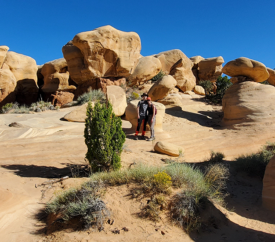
Utah Travel Tales - Journey to the Desert Southwest with Katie Arenas
An Interview with Katie Arenas, Avid Traveler & OBP Travel Planner Katie Arenas grew up with an appreciation for the outdoors through immersive travel with family, friends, and as a solo traveler. She let her passion for active outdoor adventure lead her all the way to her role at Off the Beaten Path, where she […]
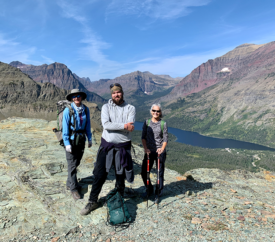
Ryan Smith Travel Tales - Traveling Solo & Sharing Trails
A Conversation with OBP Traveler Ryan Smith Ryan Smith is a frequent solo traveler with Off the Beaten Path. He has explored the country with OBP, from the unique deserts of California and Texas, to the coasts of the Pacific Northwest, the staggering, wild landscapes of the Rocky Mountains, and beyond. In this interview, Ryan […]
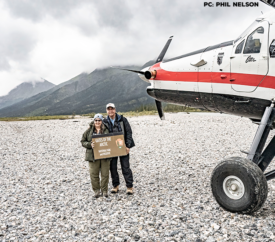
Alaskan Travel Tales From Phil and Marilyn Nelson
Meet Phil and Marilyn, Intrepid DIY adventurers with a passion for exploration. Intrigued by Alaska’s stunning beauty, vast terrain, and unique culture, they’d set their sights on the challenging frontier of visiting the five national parks without road access. They turned to OBP to craft a customized journey tailored to their goals and interests – […]
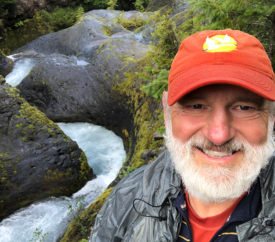
Kurt Westenbarger: Connecting People and Nature Through Guiding
Celebrating a Lifetime of Inspiration, Adventure, and Stories As 2024 approaches, we celebrate the remarkable career of longtime Off the Beaten Path guide Kurt Westenbarger. From the rugged Northern Rockies to the mystical Desert Southwest, Kurt has emerged as a traveler’s favorite, bringing to life the landscapes with his in-depth knowledge and captivating narrative style. […]
Stay in the know and feed your spirit of adventure. Get travel inspiration sent straight to your inbox!

Get your OBP Journeys Catalog
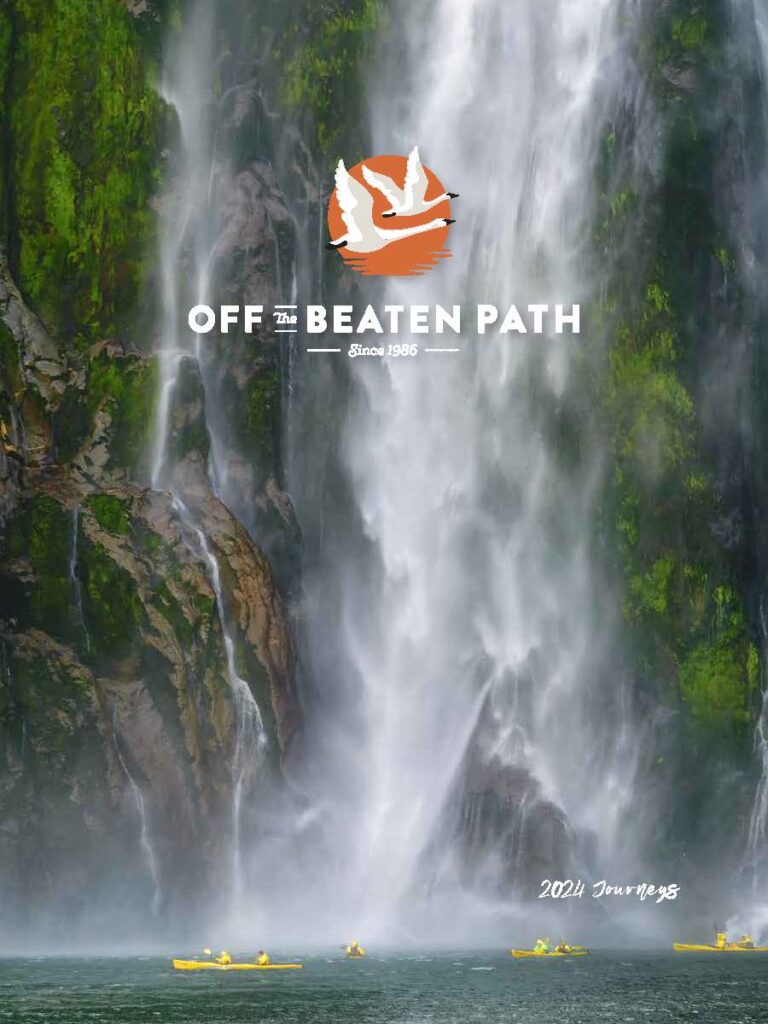
What's Included:

Detailed trip information Everything you need to know about our upcoming trips.
Adventure Collection Member Founding member of the Adventure Collection.
What makes OBP unique We believe travel is where the heart of the traveler meets the soul of the place.
Fill out the information below and we'll send you our current journeys catalog asap! This delightful portfolio is our annual effort to inspire travel – to remind our friends that getting out and connecting with the world enriches our lives and fills our heart and soul for a lifetime. Thanks for letting us share this with you!
An * denotes a required field
WELCOME TO OFF THE BEATEN PATH

Bring your curiosity and come exploring with us!

NORTH TO ALASKA
To receive our most complete detailing of this small group adventure, please provide your preferred contact information.

This Remote U.S. National Park Is Home to Bats, Beaches, and Tropical Rain Forests
One of the newest america the beautiful quarters will feature a fruit bat family in honor of the national park of american samoa. here’s what you need to know about this gorgeous and lesser-known park..
- Copy Link copied

Mount Alava is one of over 40 mountains in the National Park of American Samoa.
Photo by Danita Delmont/Shutterstock
People are going batty about a new quarter design (pictured here ) entering circulation in February that commemorates the National Park of American Samoa . Part of the America the Beautiful Quarters Program—which features national park sites from every state, D.C., and the five U.S. territories—the coin depicts a mother fruit bat and her pup and was designed to promote awareness of the species’s threatened status. Fans of bats, vampires, Batman, and wordplay have taken to social media to celebrate the news with jokes and puns.
But whether you think the winged mammals are adorable or you love the Gothic turn U.S. currency has taken, you might be forgetting that the design actually honors the national park these fruit bats call home. You wouldn’t be the first to overlook the National Park of American Samoa, which is situated in the South Pacific Ocean, halfway between Hawaii and New Zealand. Not only is it one of the most remote parks in the United States, but it’s also—according to National Park Service statistics —one of the least visited parks in the system. Only 29,000 people visited in 2018.
It is also a tropical paradise filled with rain forests, secluded sand or coral beaches, and colorful reefs. You might recognize the parks’ most famous beach, Ofu Beach, a lonely stretch of white sand bordered on one side by clear, deep blue water, and tilting palm trees on the other. There are never any beachgoers in these photographs, but it’s not because the photographers are patient—if you make the trip, you really are likely to be the only traveler around. Here’s what you need to know about the National Park of American Samoa .

Fruit bats are actually large, with wingspans reaching up to three feet. They are important pollinators in their habitats.
Photo by Lloyd Wallin/Shutterstock
What to expect
Authorized by Congress on October 31, 1988, but leased from the Samoan village councils in 1993, the National Park of American Samoa is the only National Park Service site south of the equator. It covers 13,500 acres—4,000 of which are ocean and coral reef—and includes sections of four of the five volcanic islands of the territory of American Samoa, Tutuila, Ta‘u, Ofu, and Olosega.
The park’s total land area of about 76.8 square miles is slightly larger than Washington, D.C. and includes 9,500 acres of Old World, or paleotropical, rain forest draped over more than 40 mountains. It is the only U.S. park that’s home to the fruit bat. Here you can go bird-watching and spot some 350 species of native birds including colorful tropical pigeons and the Samoan starling. Off the coast, you might be able to view sea turtles and humpback whales, or you can go snorkeling to look for some of the 950 species of fish and 250 species of coral protected here. There are even important archaeological sites dotting the parklands, such as Old Vatia, a prehistoric village site believed to have been inhabited from 1300 to 1750.
But the National Park of American Samoa isn’t just flora and fauna. In partnership with the native communities, the park also helps protect the customs, beliefs, and traditions of the 3,000-year-old Samoan culture here, Faasamoa. Interacting with locals is a big part of a visit. Many travelers opt to participate in a homestay, book a tour with local guides, or go trolling with a local crew aboard a fishing boat. But even if you stick to hiking, you’ll likely end up connecting with park neighbors to ask permission or pay a toll to access certain trails or parts of the park that run through private property.

Ofu Beach is one of the most recognizable beaches in the National Park of American Samoa.
Need to know
The National Park of American Samoa may be blissfully tourist-free, but that comes with some downsides. This isn’t your Yosemite or your Grand Canyon . There are park rangers, but you won’t find the usual facilities or a packed calendar of programs and events here. The National Park of American Samoa advises potential visitors that they’ll need a “bit of the explorer’s spirit.”
The park is open 24 hours and there are no fees or reservations. There is also no camping in the park.
Most visitors explore the national park area on Tutuila, the main island of American Samoa. They fly into Pago Pago, the capital of—and the largest city in—the territory. The park headquarters and visitor center, with exhibits and a park store, are located in Pago Pago. In this portion of the park, you’ll find the best hiking options such as the easy, 0.1-mile Pola Island Trail, which leads to a rocky beach, or the more difficult Mount Alava Trail, a seven-mile round-trip hike that passes a banana and coconut plantation and summits Mount Alava for panoramic views. Outside the park, you can also visit a number of National Natural Landmarks highlighting recent volcanism, as well as World War II–era historic sites.
But more than half the park is actually on the Manua Islands (Ta‘u, Ofu, and Olosega), which are 60 miles east of Tutuila. These islands can be difficult to reach, so prepare to be flexible when it comes to making your way over. Rest assured, they’re more than worth the effort—Ta‘u contains 5,400 acres of parkland including Lata Mountain, which, at 3,170 feet, is American Samoa’s highest peak. Ofu, which is only accessible via small fishing boats from Ta‘u, is also considered the most beautiful part of the park. Here you’ll find that famous beach, which has graced the cover of many guides to American Samoa and, off it, a 350-acre reef that boasts some of the best snorkeling in the area. Though, you’ll want to bring gear from Tutuila: While there is accommodation on Ta‘u and Ofu, life here is slow and traditional, and you won’t find restaurants, bars, or shops.

At the National Park Service Resarch Lab in the Ofu lagoons, scientists study the effects of climate change on coral reefs.
Photo by Damsea/Shutterstock
Mikah Meyer, the youngest person to visit all 417 U.S. National Park Service sites , wrote about his experience at the National Park of American Samoa and strongly advises booking your trip with a local guide—he recommends Tour American Samoa —to smooth the planning process and get the most out of the lesser-known park.
A guide will also help you navigate cultural norms. The park Visitor Guide has a number of tips that will help you be respectful, but know that you should always ask villagers for permission to take photos, use a beach, and engage in other activities such as swimming or fishing, however unobtrusive your actions may seem. Also, Sunday is a day of rest, so the islands tend to be quieter and certain activities, like swimming, may not be permitted.
Finally, as with many tropical regions, the sun here is intense, so pack sunscreen and reusable water bottles . According to the National Park Service, American Samoa has had outbreaks of chikungunya, dengue, and zika—although none recently—so you’ll want to pack insect repellent too.
American Samoa experiences warm or hot temperatures year round and high humidity. The drier season runs from June through September, when temperatures dip slightly, but expect frequent short or long rain showers no matter when you visit. There are often tropical storms in the wet summer season, which runs October through May.
If you’re interested in whale-watching, consider visiting in August or September. Humpbacks pass this area from August to November and often come really close to land.

Bats are one of the animals you can see in this American Samoa landscape.
Getting there
Hawaiian Airlines flies to Pago Pago twice a week from Honolulu. Once on Tutuila, you can reach the park by car, taxi, or local bus. There are no buses or taxis on other islands. Small planes fly from Tutuila to Ta‘u, but you’ll need to take a small fishing boat from Ta‘u to Ofu.
>>Next: This Captivating Desert Landscape Just Became the Newest U.S. National Park

- Skip to global NPS navigation
- Skip to this park navigation
- Skip to the main content
- Skip to this park information section
- Skip to the footer section

Exiting nps.gov
Alerts in effect.
Last updated: February 5, 2015
Park footer
Contact info, mailing address:.
National Park of American Samoa MHJ Building, 2nd Floor Pago Pago, AS 96799
684 633-7082 x22
Stay Connected

IMAGES
COMMENTS
Park rangers are available throughout the day to help you plan a safe and memorable visit to the national park. The National Park of American Samoa's Visitor Guide (pdf format) includes additional trip planning information. You may also send us inquiries through email at [email protected], or reach us at (684) 633-7082, ext. 22.
Are you looking for an unforgettable adventure in American Samoa? Explore the stunning natural and cultural attractions of this Pacific paradise with touramericansamoa.com. Whether you want to visit the remote island of Aunu'u, hike the scenic National Park trails, or snorkel in the crystal clear waters, we have a tour for you. Book your tour today and discover the beauty and diversity of ...
You allowed our participants to have an unforgettable and unique experience that not many others get." -Taylor Auyoung. Pacific Island Institute. We offer the best tours of American Samoa. From the National Park, to Aunu'u and Manu'a Islands, Samoan Village Excursions, and all the must-see sites.
My most-watched video on Facebook, with 341,000 views and counting. Halfway between Hawai'i and New Zealand rests the only U.S. National Park Service site south of the equator. A tropical forest, a beach where you'll be the only person you see, and a culture than spans five inhabited islands are what make a visit to the National Park of American Samoa unique. My 9 days on the islands were ...
Talofa! Welcome to American Samoa and to the only U.S. National Park south of the equator. On this tour, you have the rare opportunity to visit all three of the islands where the National Park of American Samoa is located. You will be spending time with the community and learning about the customs of the islands, while also visiting paleotropic rainforests and seeing flora and fauna that are ...
Pago Pago Harbor is .6 miles wide and 2.5 miles long. People born in American Samoa are United States nationals (not citizens). A somewhat traditional society, it is polite to cover up if you are away from a beach. American Samoa's weather is tropical. Located just 14 degrees south of the equator, it is hot and humid.
By gregoryk682. He did an excellent job telling us about the history and culture of the island and taking us to several scenic sights. 2. Pago Pago Marine Charters. 4. Scuba & Snorkelling • Fishing Charters & Tours. By SFBayFisherman. Hello.
Following the visit to the national park, the group will enjoy a tour of the state-of the art Tauese P.F. Sunia Ocean Center to learn about the National Marine Sanctuary of American Samoa, the largest and most remote of the U.S. National Marine Sanctuaries. Formed by extinct volcanoes, its habitats are host to a bewildering variety of tropical ...
For information, write National Park of American Samoa, Pago Pago, American Samoa 96799, talk by phone at +1 684 633 7082 ext. 22, or visit the website. You can also drop in at the visitor center ...
Experiencing Our Park And Local Culture. Because the park is relatively new and remotely located, you will not find the usual facilities of parks on the mainland. Instead, with a bit of explorer's spirit, you can discover secluded villages, observe tropical forest plants and wildlife, snorkel coral reefs, and explore the magnificent island and ...
Welcome to the National Park of American Samoa, the only U.S. national park south of the equator. On this tour, you have the rare opportunity to visit all of the islands that comprise this national park — Tutuila, Aunu'u and the Manu'a Islands. You will be spending time with the community and learning about the customs of the islands, while also visiting paleotropic rainforests and ...
Take a pre-booked tour of Maugaoali'i Government House the official residence of the Governor and First Lady. Visit the National Park of American Samoa on Tutuila and our outer Manu'a Islands. Take a drive from Pago Pago Harbor over to the village of Vatia and enjoy the breathtaking view of the harbor below. Drive towards the west and visit ...
The National Park of American Samoa is one of the most unique national parks in the U.S. National Park Service. This remote paradise is located in the South Pacific on 3 different islands. The National Park of American Samoa is built on the Samoan culture, which has been preserved and respected for over 3,000 years.
Irma V. Oslo, Norway. With acres upon acres of verdant tropical rainforests, pristine beaches, and teeming coral reefs, National Park of American Samoa is a true hidden gem. Almost one-third of the park's surface is underwater and home to an astounding 250 coral and 930 fish species, making it one of the country's marine biodiversity hotspots.
We return to Tutuila by plane, with time to take in more of the island's features -Fagasā Bay to Afona Bay, Mount Alava, Maunaloa Ridge, and coastline. We take a walking tour of the village of Fagatogo and visit the National Marine Sanctuary of American Samoa and the National Park of American Samoa Visitor Center.
The National Park of American Samoa advises potential visitors that they'll need a "bit of the explorer's spirit.". The park is open 24 hours and there are no fees or reservations. There is also no camping in the park. Most visitors explore the national park area on Tutuila, the main island of American Samoa.
April 16, 2024. Paramount+ and the National Park Foundation announced today that Paramount+ will become the first official streaming partner of the National Park Foundation and offer captivating content through live streams and additional VOD national parks content. The collaboration will kick off this Earth Day on April 22.
Directions. Rainbow over Pola Island. NPS. Getting to American Samoa. Hawaiian Airlines. Since the park is in a remote part of the South Pacific and has limited access opportunities, unless you live in American Samoa, more than casual planning is required to visit the park. The nearest airport is Pago Pago International Airport on Tutuila Island.